
Smarter email, faster business.
Auto-tag, parse, and respond to RFQs, quotes, orders, and more — instantly.
Trending
Categories
Aviation News. Powered by AI.
Verified by ePlane AI
AI fact-checks every story before it goes live.
Latest News
Trending News
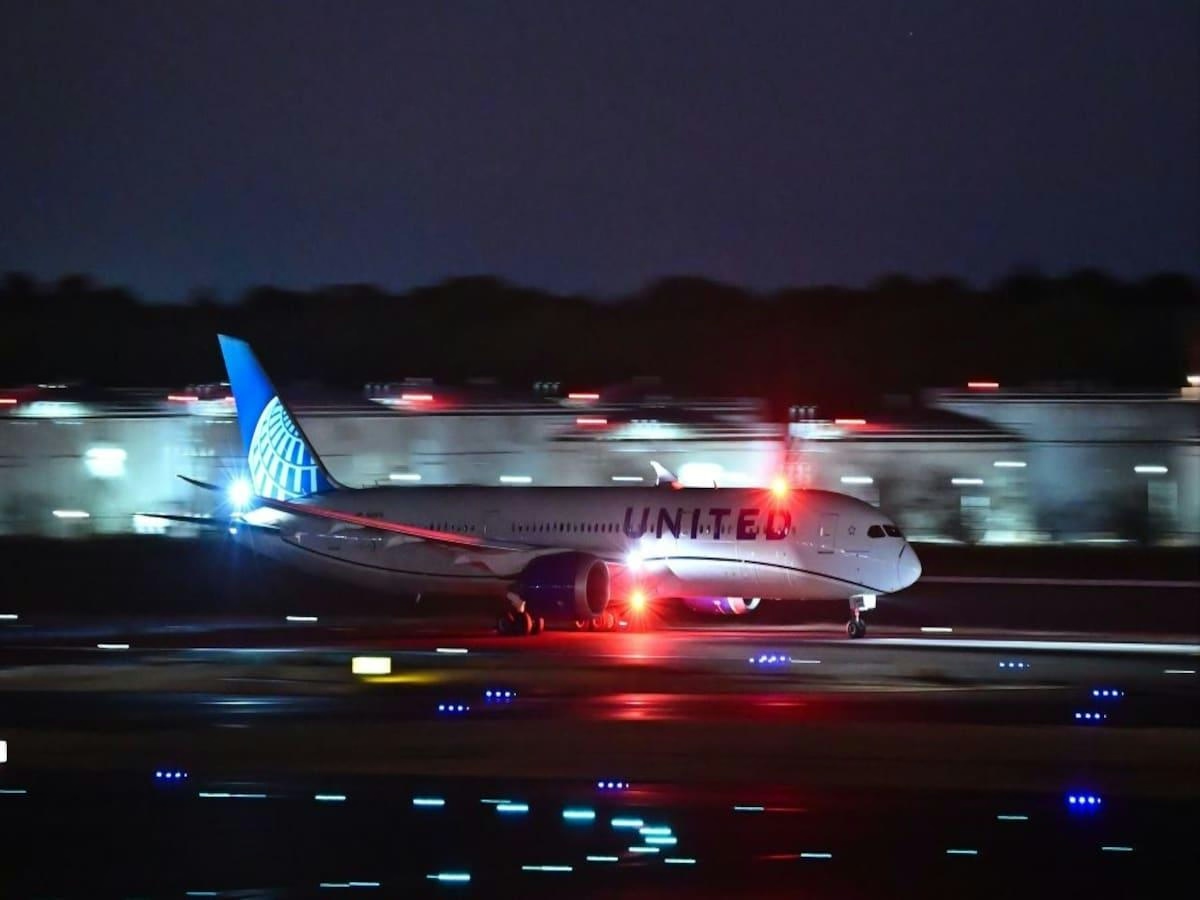
United Boeing 787 Makes Emergency Landing After Engine Failure
United Boeing 787 Makes Emergency Landing After Engine Failure
Emergency Return to Washington Dulles
A United Airlines Boeing 787-8 Dreamliner was compelled to execute an emergency landing at Washington Dulles International Airport on the evening of Friday, July 25, following an engine failure shortly after takeoff. Flight 108, bound for Munich, had departed over two hours behind schedule at approximately 8 p.m. The aircraft, carrying 230 passengers and fueled for the transatlantic journey, encountered a mechanical issue that necessitated an immediate return to the airport.
According to statements from United Airlines and the Metropolitan Washington Airports Authority (MWAA), the plane returned to Dulles roughly 30 minutes after departure. Audio recordings from air traffic control, made public by LiveATC.net, captured the pilots declaring an emergency at an altitude of about 5,000 feet, with one pilot reporting, "Engine failure, left engine. Mayday, mayday, mayday." Prior to landing, air traffic controllers directed the crew to a designated area west of the airport to conduct fuel dumping, a standard safety procedure to reduce the aircraft’s weight for landing. The tower broadcasted, "Attention all aircraft, fuel dumping in progress, 10 miles west of Dulles."
Safe Landing and Aftermath
Despite the failure of one engine, the Boeing 787 is engineered to operate safely on a single engine, a scenario regularly rehearsed in pilot training. The aircraft landed without incident, and all passengers disembarked normally at the gate. Fire and rescue teams conducted a thorough inspection before the plane was towed to a gate. United Airlines subsequently canceled the flight and arranged alternative travel for those affected. The aircraft, registered as N27901, returned to service three days later and has since completed multiple flights to destinations including Greece and West Africa.
Context and Industry Implications
This emergency landing follows a recent pattern of incidents involving United Airlines’ Boeing 787 fleet. On July 12, another United 787 flight from Los Angeles to Seattle declared an emergency mid-flight and diverted to Seattle. These consecutive events have sparked concerns regarding the reliability of the Boeing 787 model, drawing increased scrutiny from aviation regulators and passengers.
Industry analysts observe that such incidents can temporarily undermine passenger confidence and may result in elevated operational costs for airlines due to emergency protocols and necessary repairs. Competitors may also leverage these events to emphasize the safety records of their own fleets. As investigations proceed, both United Airlines and Boeing face growing pressure to address reliability issues and restore public trust.
For ongoing updates, official communications from United Airlines and relevant aviation authorities should be consulted.
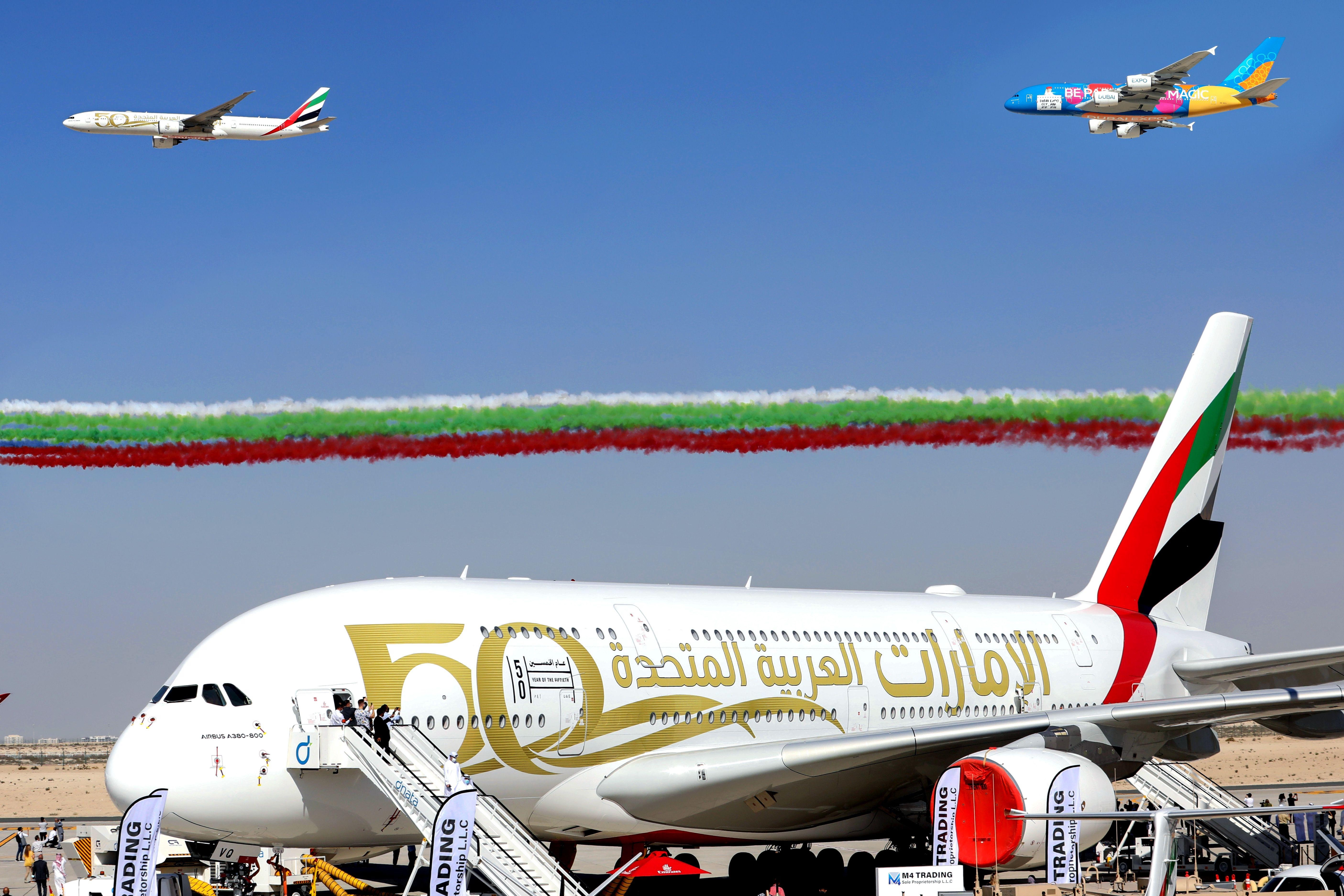
How the Boeing 777-300ER Compares to the Airbus A380 in Size
How the Boeing 777-300ER Compares to the Airbus A380 in Size
When discussing the largest commercial aircraft in operation today, the Boeing 777-300ER and the Airbus A380 are the two dominant models. Each represents a significant achievement in aerospace engineering but caters to different operational needs and market demands. Their differences in size, passenger capacity, and intended use highlight the distinct roles they play within global aviation.
Size and Capacity: A Detailed Comparison
The Airbus A380 holds the distinction of being the largest passenger airliner ever constructed. Its unique double-deck design enables it to accommodate up to 853 passengers in an all-economy configuration, or approximately 575 passengers in a more typical three-class layout. By contrast, the Boeing 777-300ER, the largest variant within the 777 family, can seat a maximum of 550 passengers in a high-density arrangement, though it more commonly carries around 396 passengers in a three-class configuration.
Physically, the A380 exceeds the 777-300ER in nearly every dimension except length. The 777-300ER measures 242 feet 4 inches (73.9 meters) in length, slightly longer than the A380’s 238 feet 7 inches (72.7 meters). However, the A380’s wingspan extends to 261 feet 8 inches (79.8 meters), significantly wider than the 777-300ER’s 212 feet 7 inches (64.8 meters). The A380 also stands taller at 79 feet (24.1 meters), compared to the 777-300ER’s height of 61 feet (18.5 meters). In terms of maximum takeoff weight, the A380’s 1,234,600 pounds (560,000 kilograms) far surpasses the 777-300ER’s 775,000 pounds (351,534 kilograms). These dimensions underscore the A380’s dominance in size and capacity, despite the 777-300ER’s advantage in length.
Operational Roles and Market Positioning
The Boeing 777-300ER was engineered to serve long-haul routes with a focus on operational efficiency and flexibility. Its twin-engine design allows it to operate from a broader range of airports, including those unable to accommodate the larger A380. This versatility, combined with lower operating costs and a moderate passenger capacity, makes the 777-300ER a preferred choice for airlines seeking to balance capacity with economic performance.
Conversely, the Airbus A380 was developed to maximize passenger volume on high-density international routes, primarily connecting major global hubs. Its immense size necessitates specialized airport infrastructure, limiting the number of airports capable of handling the aircraft. Nevertheless, the A380 remains a favored option for carriers aiming to transport large numbers of passengers efficiently on heavily trafficked routes.
Industry Response and Future Developments
The market’s response to these aircraft reflects their strategic roles within the aviation sector. Emirates, the largest operator of the A380, continues to invest in the superjumbo, with plans to upgrade its first-class suites and extend the aircraft’s operational lifespan through 2040. The airline has also expressed interest in Boeing’s developments, including visits to Boeing’s assembly facilities to monitor progress.
Meanwhile, other airlines are reassessing their fleet compositions. Kenya Airways, for example, is considering reintroducing the 777-300ER alongside exploring the Boeing 737 MAX, demonstrating the ongoing relevance of the 777 family. In response to Boeing’s advancements, Airbus is developing a stretched version of its A350 to compete directly with the forthcoming Boeing 777-9, highlighting the competitive dynamics shaping the large aircraft market.
Conclusion
While the Airbus A380 remains the world’s largest passenger aircraft by nearly every measure except length, the Boeing 777-300ER continues to hold a vital position in commercial aviation due to its versatility and efficiency. Both aircraft exemplify the evolving demands of the industry and maintain prominent roles in the global air travel landscape.
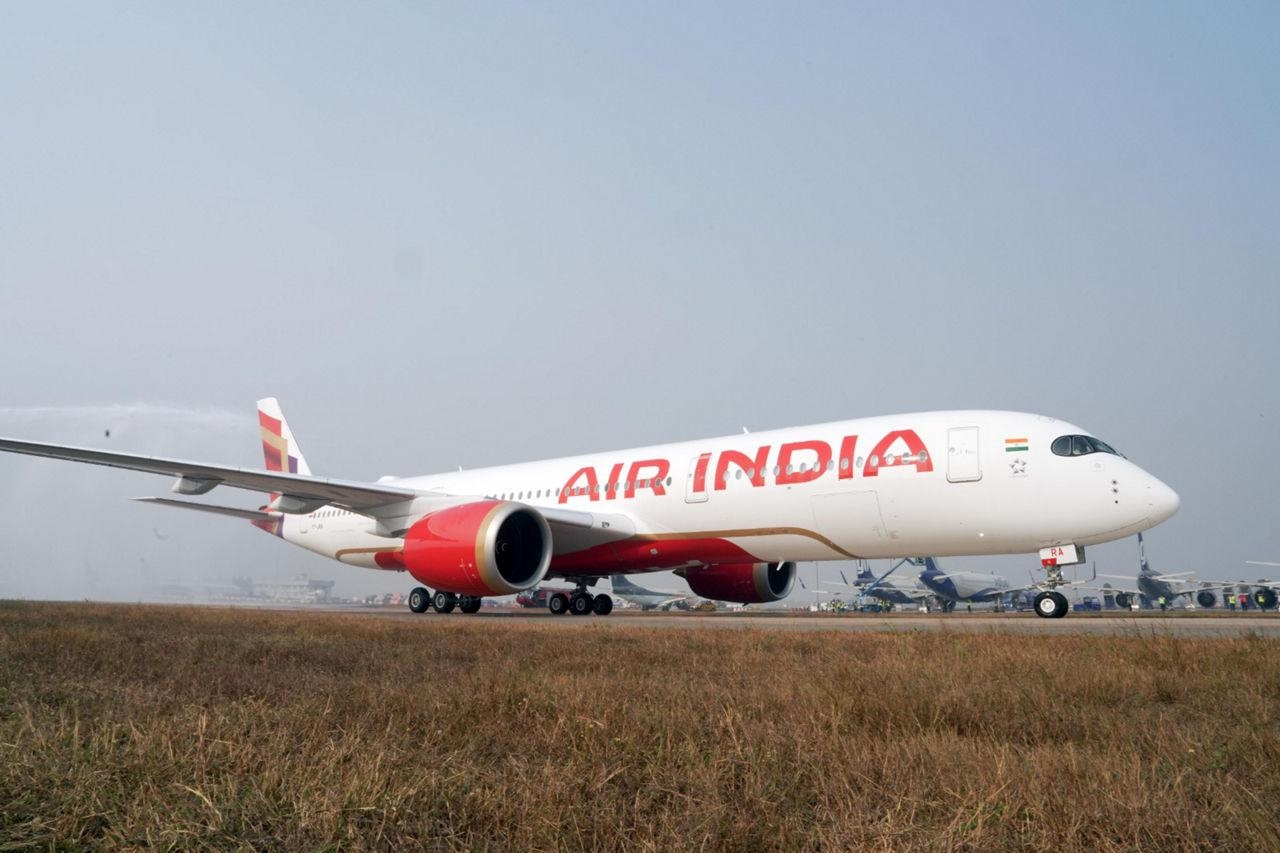
Air India Announces Delivery Schedule for A321neo, A350-1000, and 787-9 Aircraft
Air India Announces Delivery Schedule for A321neo, A350-1000, and 787-9 Aircraft
Major Fleet Modernization Underway
Air India Group, now under the ownership of the Tata Group, is advancing a landmark fleet renewal initiative that promises to transform its operational capabilities and competitive positioning within the Indian aviation sector. Central to this effort is an unprecedented order of 570 aircraft, among the largest in the history of commercial aviation. This extensive acquisition includes the latest models from Airbus and Boeing, notably the A321neo, A350-1000, 787-9 Dreamliner, and 777-9. These additions are expected to significantly expand Air India’s capacity and modernize its fleet.
Delivery Timeline and Deployment Plans
To date, the Air India Group—which comprises both Air India (AI) and Air India Express (IX)—has taken delivery of six Airbus A350-900s alongside more than 40 Boeing 737 MAX aircraft. The next phase of this fleet expansion is scheduled to commence in mid-2025, with the introduction of the first A321neo, A350-1000, and 787-9 Dreamliner aircraft. This phase represents a critical step in the airline’s strategy to increase capacity and enhance service offerings.
Air India Express will be the initial operator of the new A321neo, launching scheduled services from April 15, 2025. The inaugural routes will connect Delhi (DEL) with Bengaluru (BLR) and Srinagar (SXR), with subsequent expansions on April 20 to include Ayodhya (AYJ) and Jaipur (JAI). The A321neo will be configured with 180 economy seats and 12 business class seats, providing improved passenger options on key domestic routes. Currently, Air India operates two A321neos (registrations VT-RTC and VT-RTD) in a 192-seat dual-class layout.
Supply Chain Challenges and Operational Adjustments
Despite the progress, Air India continues to grapple with significant supply chain disruptions. CEO Campbell Wilson has acknowledged ongoing difficulties in procuring essential components such as engines, fuselages, and premium cabin seats. These challenges are expected to cause delivery delays from both Airbus and Boeing, potentially affecting the airline’s growth trajectory for the next four to five years. In response, Air India is extending the operational lifespan of older aircraft, which entails increased maintenance costs, and is facing obstacles in leasing additional planes due to global shortages. The airline is also exercising prudence regarding further Boeing orders amid manufacturing and regulatory constraints.
Widebody Fleet Expansion: A350-1000 and 787-9
The first A350-1000 destined for Air India is nearing completion at Airbus’s Toulouse facility and is anticipated to be delivered in 2026. Currently registered as F-WZFI, the aircraft will soon be re-registered under the VT-series for Indian operations. Concurrently, the initial Boeing 787-9 Dreamliners from the 2023 order are expected to arrive by the end of 2025. Three 787-9s are presently in production at Boeing’s Charleston, South Carolina plant, equipped with General Electric GEnx-1B engines.
Order Composition and Market Implications
Air India’s comprehensive 570-aircraft order includes 20 A350-900s, 20 A350-1000s, 140 A320neos, and 70 A321neos from Airbus, alongside 20 787-9 Dreamliners, 10 777X, and 190 737-8 MAX aircraft from Boeing. Additionally, a 2024 order comprises 10 more A350s and 90 A320 Family aircraft. This sweeping modernization is anticipated to provoke strategic responses from rival carriers, who may reassess their fleet plans in light of Air India’s expanded capacity. Industry analysts expect this development to intensify competition and elevate passenger service standards across the Indian aviation market.
Commitment to Sustainability and Efficiency
Air India’s investment in next-generation aircraft reflects a strong commitment to operational efficiency, passenger comfort, and environmental stewardship. The new A350 and 787-9 models offer substantial fuel savings and reduced emissions, aligning with global efforts to promote sustainable aviation. As these aircraft enter service from mid-2025 onward, Air India is positioned to lead the industry’s transition toward eco-friendly, high-capacity air travel.
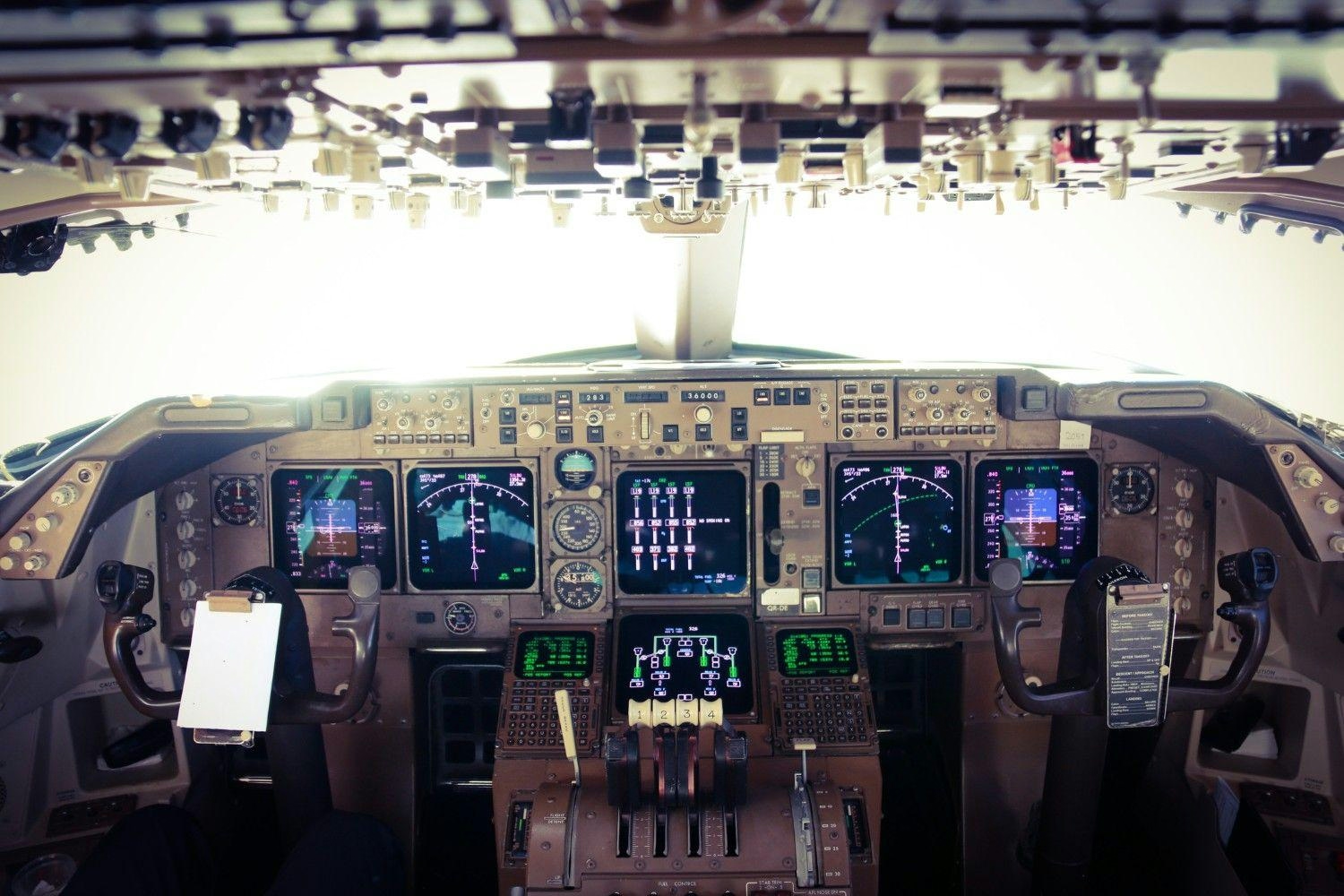
Air India Engine Shutdown: Pilots’ Body Explains FADEC Fuel Cut-Off Theory
Air India Engine Shutdown: Pilots’ Body Highlights FADEC Fuel Cut-Off Theory
Emerging Theories on Engine Failure
The Aircraft Accident Investigation Bureau (AAIB) has suggested that a possible fuel switch error may have caused the catastrophic engine failure on Air India Flight 171. However, new perspectives are focusing on the aircraft’s advanced electronic systems, particularly the Full Authority Digital Engine Control (FADEC), as a potential factor in the incident. Preliminary reports indicate that the crash was initiated by the sudden movement of fuel-control switches to the "cut-off" position, which resulted in both engines being starved of fuel. Cockpit voice recordings reveal that the captain may have cut the fuel flow while the first officer was at the controls. Despite these findings, the Federation of Indian Pilots (FIP) has urged caution against attributing blame to the crew based on early assumptions, emphasizing the need to consider all possible technical causes.
The Role of FADEC and Related Systems
At the heart of the latest theory is the FADEC system, often described as the "brain" of modern aircraft such as the Boeing 787. FADEC is responsible for monitoring and managing critical engine functions, including fuel flow and engine speed, and it has the capability to override pilot commands based on sensor inputs. This system operates in conjunction with the Electronic Engine Controller (EEC) and the Thrust Control Malfunction Accommodation (TCMA) systems. The FIP has raised concerns that a malfunction within these interconnected systems—potentially triggered by faulty sensor data—could have caused FADEC to shut down both engines without any manual input from the crew. This possibility challenges the initial narrative by suggesting that the engine failure may have led to an automatic movement of the fuel switches to the cut-off position, rather than a manual error by the pilots.
Expert Insights and Calls for Thorough Investigation
Aviation attorney Mary Schiavo, speaking to FinancialExpress.com, underscored concerns regarding the TCMA system, which informs FADEC whether the aircraft is on the ground or airborne. She referenced previous incidents, including a 2019 All Nippon Airways (ANA) Boeing 787 flight where FADEC triggered a dual engine shutdown due to erroneous sensor input. Schiavo also mentioned an ongoing investigation into a 2025 United Airlines 787 incident involving uncommanded dives, believed to be linked to software or computer malfunctions. In light of these concerns, the FIP has called for a comprehensive reassessment of the roles played by FADEC, EEC, and TCMA malfunctions in the Air India crash. The pilots’ association is urging investigators to meticulously analyze data from the Flight Data Recorder (FDR), Cockpit Voice Recorder (CVR), and relevant Boeing service bulletins before reaching any conclusions.
In response to the preliminary findings, India’s aviation regulator has mandated inspections of Boeing fuel switches across airline fleets. Meanwhile, families of the victims continue to seek detailed answers as the investigation unfolds. The FIP stresses the importance of a thorough and impartial inquiry, cautioning against premature judgments regarding crew actions until all technical possibilities have been fully examined.
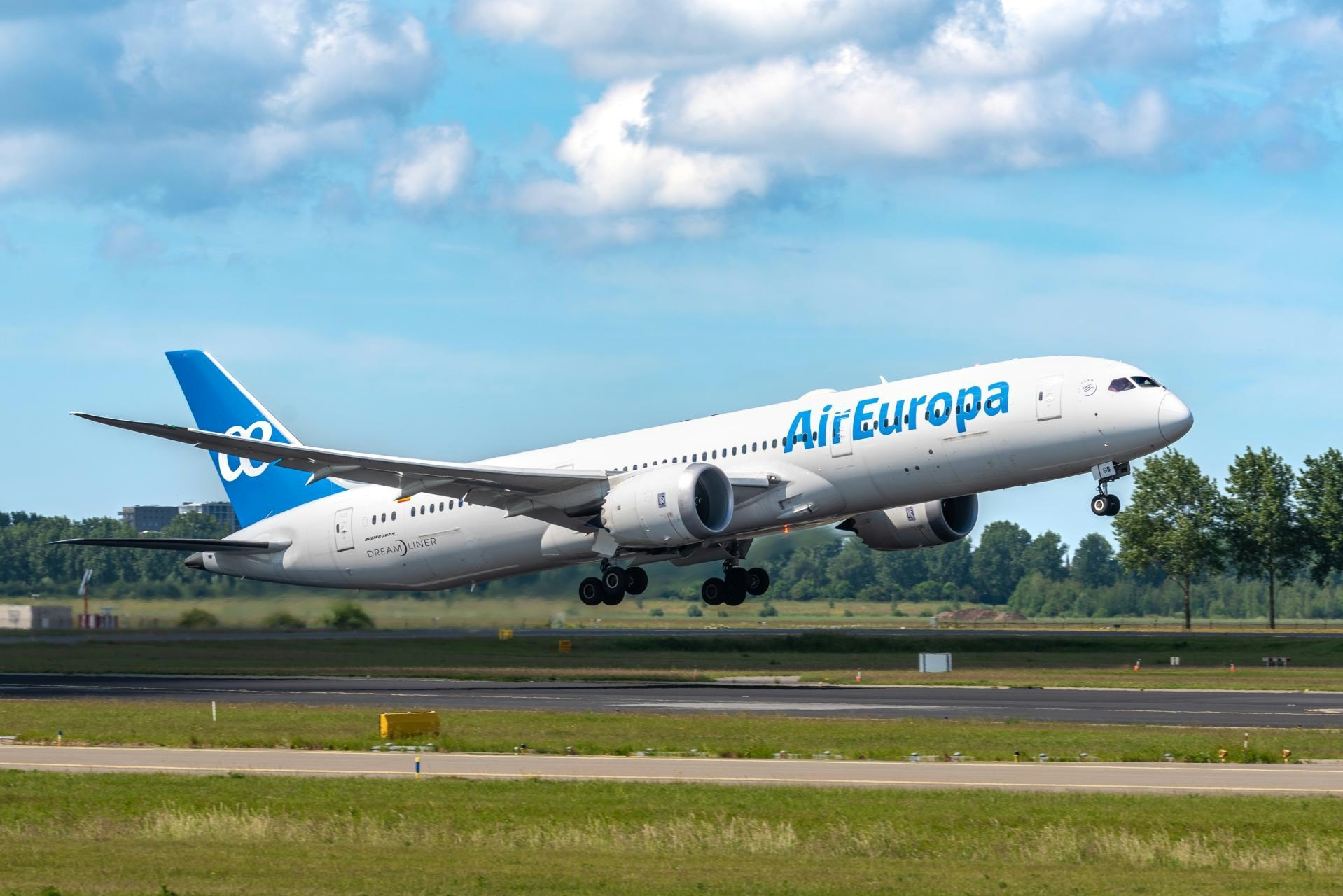
Turkish Airlines Close to Acquiring Air Europa as Air France-KLM Withdraws
Turkish Airlines Advances in Bid for Air Europa as Air France-KLM Withdraws
Turkish Airlines is positioning itself as the frontrunner to acquire a significant stake in Spain’s Air Europa following the formal withdrawal of Air France-KLM from the bidding process. Recent reports from Spanish media outlet *El Español* indicate that negotiations between Turkish Airlines and Air Europa’s parent company, Globalia, have intensified, with a deal potentially imminent. Currently, Air Europa is owned predominantly by Globalia, which holds an 80 percent stake, while the International Airlines Group (IAG) retains the remaining 20 percent.
Ongoing Negotiations and Competing Interests
The Lufthansa Group remains a contender in the acquisition race. CEO Carsten Spohr confirmed that discussions with Globalia are ongoing but emphasized the complexity of the negotiations. “I cannot yet give an answer whether it will fail or not. I can confirm that it is very difficult to get this to succeed,” Spohr remarked. According to *El Confidencial*, both Lufthansa and Turkish Airlines are considering acquiring a 25 percent stake in Air Europa, which would inject approximately EUR 240 million (USD 275 million) in fresh capital into the Spanish carrier.
Air France-KLM, which had previously expressed interest in the stake, officially exited the process, citing an inability to reach an agreement with Globalia. The Franco-Dutch group stated, “Air France-KLM stepped out from the process initiated for the sale of a stake in Air Europa as no agreement could be reached with Globalia. The cooperation between Air France-KLM and Air Europa, a member of SkyTeam, remains unchanged.” This marks the second major withdrawal from the bidding, following Etihad Airways’ exit earlier this year.
Challenges and Market Implications
The potential acquisition by Turkish Airlines faces several significant challenges, including regulatory scrutiny and possible antitrust concerns. Integrating Air Europa’s operations into Turkish Airlines’ network also presents considerable complexities. Market reactions are expected to be mixed; while some investors may view the move as a strategic expansion that enhances Turkish Airlines’ market reach and competitive positioning, others may remain cautious about the operational and regulatory hurdles involved. Competitors in the European aviation sector may respond with increased competition, strategic alliances, or pricing strategies to protect their market share.
Air France-KLM’s withdrawal may lead the group to refocus its strategic priorities, particularly its proposed acquisition of a controlling stake in Scandinavian Airlines (SAS). This initiative aims to strengthen Air France-KLM’s presence in the Nordic region and improve its overall financial performance. Meanwhile, both Air France-KLM and Lufthansa continue to pursue potential stakes in Portugal’s state-owned TAP Air Portugal, reflecting ongoing consolidation trends within the European aviation industry.
Financial Position of Air Europa
Amid these developments, Air Europa is seeking to bolster its financial position by negotiating a new loan of approximately EUR 140 million (USD 160 million) with Spanish banks Santander, BBVA, Caixabank, and Sabadell. This effort comes as the airline faces the obligation to repay a EUR 475 million (USD 550 million) loan provided by Spain’s sovereign wealth fund SEPI during the COVID-19 pandemic.
Neither Turkish Airlines nor the Lufthansa Group has issued comments regarding the ongoing negotiations, and Air Europa has also declined to provide a statement.
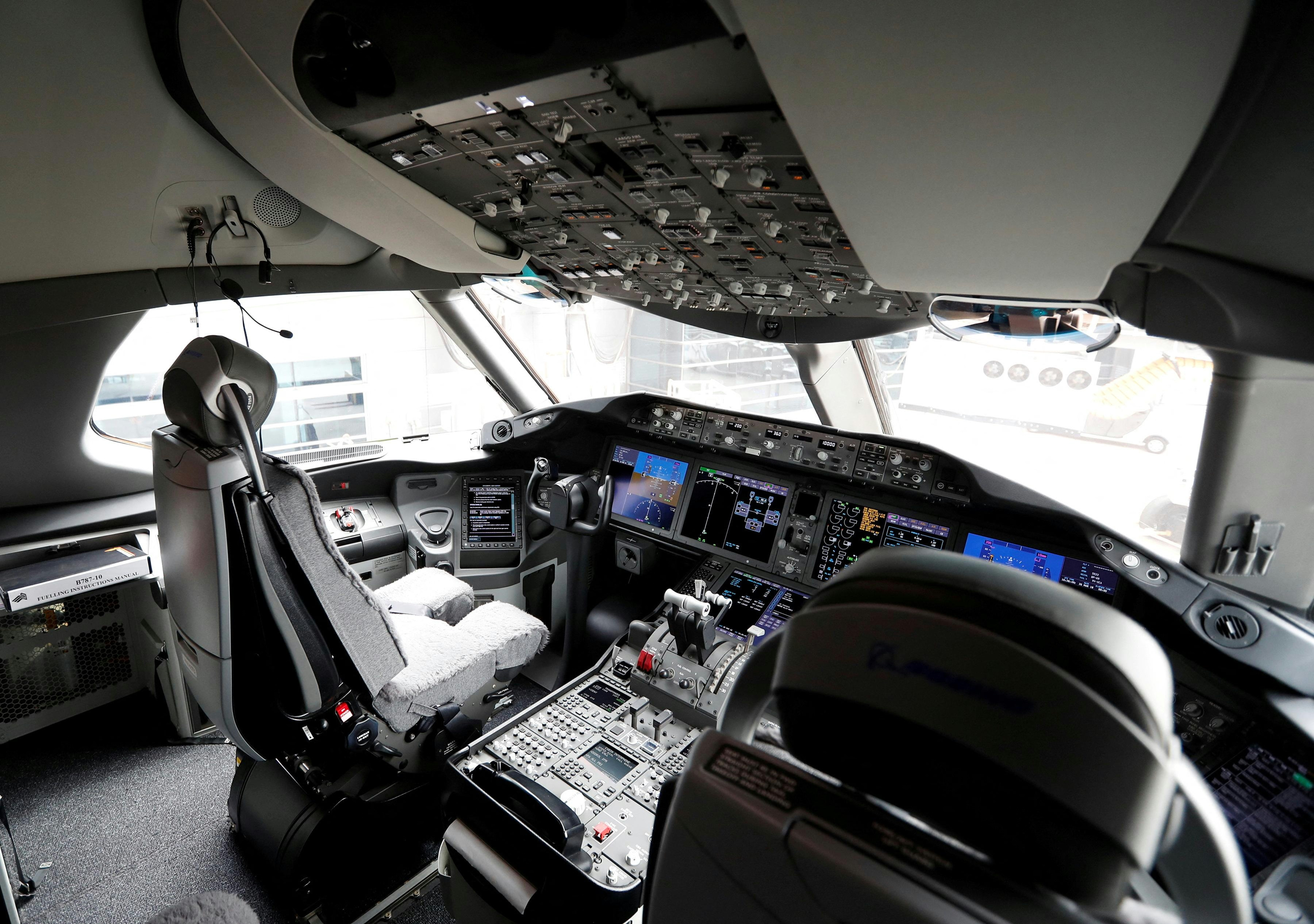
US Expert: Boeing 787 Experienced Fuel Switch Cut-Off in 2019; Japanese Pilots Did Not Intervene
US Expert Highlights Fuel Switch Cut-Off in 2019 Boeing 787 Incident; Japanese Pilots Did Not Intervene
A preliminary investigation into the Air India AI 171 crash in Ahmedabad has renewed focus on the Boeing 787’s fuel switch system. India’s Aircraft Accident Investigation Bureau (AAIB) reported that the fuel switch had shifted from the “Run” to the “Cutoff” position prior to the crash. The 15-page report, released this week, included a paraphrased exchange between Captain Sumeet Sabharwal and First Officer Clive Kunder, in which one pilot questioned the other about cutting off the fuel supply. Both pilots denied any deliberate action to do so. Shortly thereafter, a Mayday call was issued, and the aircraft crashed into a hostel for medical students, resulting in the deaths of all on board.
The AAIB report does not clarify how or why the fuel switch moved to the “Cutoff” position, leaving open the possibility of either pilot error or mechanical malfunction. To provide further insight, FinancialExpress.com consulted Mary Schiavo, a US aviation expert, who dismissed theories of intentional pilot intervention. Schiavo emphasized the absence of evidence supporting deliberate action and called for the full release of cockpit voice recorder (CVR) transcripts to avoid misinterpretation. She stated, “There is nothing here to suggest pilot suicide or murder.”
Parallels with 2019 ANA Boeing 787 Incident
Schiavo also referenced a similar event in 2019 involving an All Nippon Airways (ANA) Boeing 787. During final approach from Tokyo to Osaka, both engines failed after the aircraft’s software erroneously detected that it was on the ground. This triggered the Thrust Control Malfunction Accommodation System, which cut fuel to the engines. According to Schiavo, the pilots did not engage the fuel cutoff switches. The malfunction was ultimately traced to a software glitch rather than human error. The ANA flight, carrying 109 passengers and 9 crew members, landed safely without injuries.
Regulatory Response and Ongoing Investigations
The Air India crash has intensified scrutiny of Boeing’s fuel switch mechanisms. India’s civil aviation authority has ordered inspections of cockpit fuel switches on Boeing aircraft following the AAIB’s findings. Meanwhile, the US Federal Aviation Administration (FAA) and Boeing have maintained that the fuel switch locks are safe. However, investigations continue to explore whether the Ahmedabad crash resulted from pilot action or a technical fault.
Regulatory bodies worldwide are responding to these concerns. The UK Civil Aviation Authority (CAA) issued a warning just weeks before the crash, highlighting potential issues with fuel shutoff valves on several Boeing models, including the 737, 757, 767, 777, and 787. The fuel control switches, housed within the Throttle Control Module (TCM), had been replaced on the ill-fated AI 171 aircraft in both 2019 and 2023. Despite these replacements, questions remain regarding the reliability of the locking mechanism.
The heightened regulatory scrutiny and ongoing investigations have placed significant pressure on Boeing, with potential repercussions for its market position and investor confidence. As authorities continue to determine the root cause of the AI 171 crash, the aviation industry is preparing for possible safety reviews and further regulatory measures.

Newer Aircraft Experience Longer Turnaround Times
Newer Aircraft Experience Longer Turnaround Times
Airlines generate revenue primarily when their aircraft are airborne, making the minimization of ground time—known as turnaround time—a critical factor in profitability. This principle has been especially vital for ultra-low-cost carriers, which have historically emphasized rapid turnarounds to maximize aircraft utilization and increase daily flight frequencies. Originating with Northeast shuttle services and later embraced by Southwest and other budget airlines, this operational strategy has long been a cornerstone of efficient airline management.
Emerging Trends in Turnaround Efficiency
Contrary to expectations, recent data indicates that the latest generation of narrow-body aircraft, including the Airbus A320neo and Boeing 737 MAX, are experiencing longer turnaround times compared to their predecessors, the A320ceo and 737NG. An analysis of ADS-B data from 2024, encompassing over 1.3 million flights over an eight-day span, reveals that these newer models consistently spend more time on the ground between flights, even when operated by the same carriers under comparable conditions.
This finding appears counterintuitive, as newer aircraft are generally anticipated to enhance operational efficiency, including faster turnarounds. Operational assessments confirm that most ground procedures remain largely unchanged between the older and newer models, which share common type ratings and similar workflows.
The Role of Advanced Engine Technology
The primary factor contributing to increased turnaround times lies in the engines powering these new aircraft. The latest models are equipped with advanced powerplants—Pratt & Whitney’s Geared Turbofan (GTF) and CFM International’s LEAP engines—that operate at higher core temperatures than their predecessors. To ensure safety and maintain reliability, manufacturers recommend extended engine cool-down and warm-up periods. These engines, being larger and heavier, necessitate additional ground time to manage thermal cycles effectively, thereby offsetting some of the efficiency gains achieved through their advanced design.
Implications for Airline Operations and the Aviation Market
This development carries significant implications for airline operations and the broader aviation market. Increased turnaround times can elevate operational costs by reducing fleet utilization, potentially encouraging airlines to retain older aircraft in service longer to uphold schedule reliability. Some carriers may shift demand toward older models or explore alternative maintenance strategies to mitigate the impact of these delays.
The industry is already responding to these challenges. Persistent delivery delays for new aircraft have compelled airlines to extend the operational lifespan of existing fleets, thereby boosting demand for aftermarket maintenance services. Reflecting this trend, GE Aerospace recently revised its 2025 profit forecast upward, attributing the increase to heightened maintenance demand as airlines maintain older jets for longer periods.
While the new engine technologies offer substantial fuel savings—estimated at 15 to 16 percent—the trade-off is a modest increase in turnaround time. For airlines, the economic advantages of improved fuel efficiency may outweigh the operational drawbacks, yet the industry is clearly adjusting to a new operational paradigm in which the latest aircraft are not necessarily the fastest to turn.
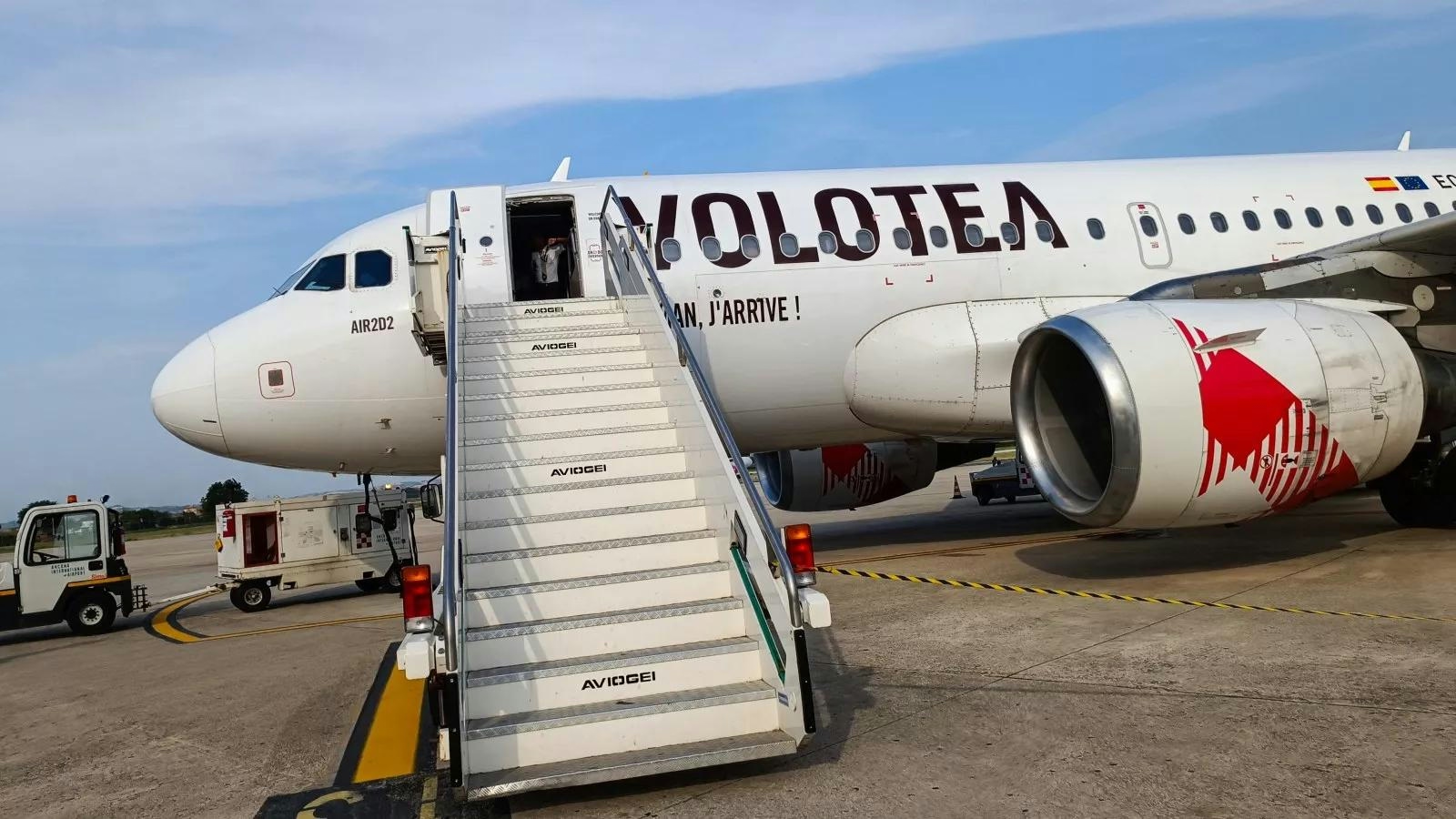
Investigation Launched into Fatal Injury Caused by Volotea A319 Engine at Milan Bergamo Airport
Investigation Launched into Fatal Injury Caused by Volotea A319 Engine at Milan Bergamo Airport
A tragic accident at Milan Bergamo Airport has resulted in the death of a ground worker after being struck by the engine of a Volotea Airbus A319 during taxiing operations. The incident occurred as the aircraft was maneuvering along a taxiway in preparation for departure. Italian authorities have initiated a formal investigation to establish the exact circumstances surrounding the fatality.
Details of the Incident
The accident took place at Milan Bergamo Airport, a key hub for low-cost carriers in northern Italy. The Volotea Airbus A319 involved, a narrow-body aircraft typically deployed on short- and medium-haul routes, was not carrying passengers at the time of the incident. Preliminary reports indicate that the victim, whose identity has not been disclosed, was working in close proximity to the aircraft’s engine when the accident occurred. The flight crew onboard the aircraft were unharmed.
Investigators are currently examining whether the engine was operating at high thrust during the incident and if all standard safety protocols were properly observed. The precise sequence of events remains under review as authorities gather further evidence.
Investigation and Regulatory Response
Italy’s Civil Aviation Authority (ENAC) has launched a comprehensive inquiry focusing on airport safety procedures and the aircraft’s taxiing operations. The investigation seeks full cooperation from Volotea, airport management, and ground personnel to clarify the factors that contributed to the fatal accident.
The inquiry will evaluate whether established safety measures were adhered to and if any technical or procedural lapses played a role. The findings are anticipated to influence future safety protocols and may have wider implications for ground operations across Italian airports.
Airport and Airline Statements
Both Milan Bergamo Airport and Volotea have expressed their condolences to the family of the deceased and have pledged full cooperation with the ongoing investigation. Airport officials confirmed that the accident occurred during routine taxiing and noted that overall airport operations were not significantly disrupted. They also emphasized their commitment to reviewing and enhancing safety protocols to prevent similar incidents in the future.
A spokesperson for Volotea stated, “We are deeply saddened by this tragedy and are fully cooperating with the authorities to understand the cause of this incident. Our thoughts are with the family of the individual involved, and we are committed to supporting the investigation process in any way possible.”
Broader Implications for Volotea and the Industry
This incident places Volotea under heightened regulatory scrutiny and may expose the airline to compensation claims as well as reputational challenges. Should Volotea be publicly traded, market reactions could include fluctuations in its stock price. Competitors within the industry may respond by reinforcing their own safety measures and issuing public reassurances to maintain customer confidence.
The tragedy highlights the critical importance of strict adherence to ground safety protocols, particularly in the vicinity of active aircraft engines. Modern jet engines, such as those fitted on the Airbus A319, present significant hazards if safety procedures are not rigorously enforced. The ongoing investigation will be closely monitored by industry stakeholders and the public alike.
For further updates, official statements from Volotea and Italian aviation authorities should be consulted.

US-EU Trade Deal Excludes Tariffs on Aviation Industry
US-EU Trade Deal Excludes Tariffs on Aviation Industry
In late July, the United States and the European Union finalized a pivotal trade agreement that notably excludes the aviation industry from new tariffs. Announced on July 27 by U.S. President Donald Trump and European Commission President Ursula von der Leyen, the accord guarantees that aircraft and aircraft parts traded between the two economic powers will remain tariff-free. This exemption offers crucial relief to manufacturers and airlines on both sides of the Atlantic, preserving the stability of a sector integral to transatlantic commerce.
Industry Response and Economic Implications
The aviation sector welcomed the agreement with broad approval. James Viola, President and CEO of the General Aviation Manufacturers Association, alongside Ed Bolen, President and CEO of the National Business Aviation Association, commended the decision to protect the aviation supply chain from tariff impositions. Major industry players such as Airlines for America and Delta Air Lines expressed optimism that the deal would help stabilize operational costs and foster growth within the sector.
Prior to the agreement, concerns had mounted over the potential impact of a proposed 15% tariff on European imports to the U.S., which threatened to increase production costs and disrupt the complex supply chains underpinning aircraft manufacturing and airline operations. By averting these tariffs, the deal aligns with longstanding international efforts to maintain a tariff-free environment for civil aviation products. This approach mirrors existing arrangements, such as the Agreement on Trade in Civil Aircraft, under which Brazilian aerospace company Embraer has benefited from zero tariffs since 1980 and is currently negotiating to preserve this status.
Broader Trade Provisions and Strategic Significance
Beyond the aviation sector, the U.S.-EU trade agreement encompasses wider economic commitments. The European Union has pledged to invest $600 billion in the United States, while most European imports will now be subject to a 15% tariff. However, certain categories—including natural resources, specific chemicals, and agricultural products—will continue to enjoy zero tariffs. The timing of the agreement was critical, concluding just before August 1, when the Trump administration implemented tariffs on numerous countries, marking what was termed “Liberation Day.” These tariffs represent increases of up to 50% on some goods entering the U.S. market.
European Commission President Ursula von der Leyen underscored the magnitude of the deal, emphasizing the economic weight of the partnership: “This is a deal between the two largest economies in the world. We trade USD 1.7 trillion per year. Together, we are a market of 800 million people. And we are nearly 44% of global GDP.”
By excluding the aviation industry from new tariffs, the U.S.-EU trade deal is poised to deliver substantial benefits to airlines and manufacturers alike, ensuring continued stability and growth in a sector vital to both economies.

United Airlines Restores Flights Following Software Outage
United Airlines Resumes Operations Following Nationwide Software Disruption
United Airlines restored its flight operations late Wednesday after a significant software outage temporarily grounded numerous flights and caused widespread travel disruptions across the United States. The incident affected over 1,000 flights and led to extensive delays at key hubs including Chicago O’Hare, Denver, and Houston.
Details of the Outage and Its Impact
The disruption began at 5:12 p.m. Central Time on August 6, 2025, originating from a failure in United’s Unimatic system. This critical platform is responsible for distributing flight information to various operational systems, including those managing aircraft weight and balance calculations and tracking flight times. The failure halted departing flights for several hours, triggering a cascade of delays and cancellations throughout United’s network.
By Wednesday evening, United confirmed that the technical issue had been resolved. In an official statement, the airline acknowledged that while residual delays were expected, efforts were underway to restore normal operations. United also clarified that the outage was unrelated to recent cybersecurity incidents affecting the airline industry.
Flight tracking data from FlightAware indicated that 1,093 United flights—approximately 35% of its schedule—were delayed on Wednesday, with an additional 218 flights, or 7%, canceled. Delays continued into Thursday, with 5% of flights delayed and 4% canceled. At major airports such as Chicago O’Hare, Houston, and Newark, aircraft were observed waiting on taxiways either for departure clearance or available gates to disembark passengers.
Passenger Experience and Operational Response
Passengers endured prolonged waits on the tarmac, during which flight attendants distributed snacks and water to alleviate discomfort. At Washington Dulles International Airport, a United flight bound for Mexico City returned to the gate after nearly three hours on the tarmac, allowing passengers to disembark and stretch their legs in the terminal while awaiting further updates.
The Federal Aviation Administration (FAA) confirmed that ground stops were temporarily implemented for United flights at several major airports, including Denver, Houston, Newark, San Francisco, and Chicago. Importantly, the FAA emphasized that there was no risk to aircraft already in flight during the outage.
In response to the disruption, United announced it would waive change fees for affected travelers with bookings between August 7 and August 10. This policy applies to flights involving 14 cities, including Washington, Houston, London, and Frankfurt.
Industry Context and Outlook
This incident follows closely on the heels of a similar technology failure experienced by Alaska Air Group two weeks prior, which temporarily grounded its entire fleet. The recent disruption at United has heightened concerns within the industry regarding airline reliability and customer satisfaction. Competitors are reportedly monitoring the situation closely, potentially seeking strategic or public relations opportunities.
As the world’s largest airline by capacity, United is now focused on stabilizing its operations and minimizing further disruptions to its customers.
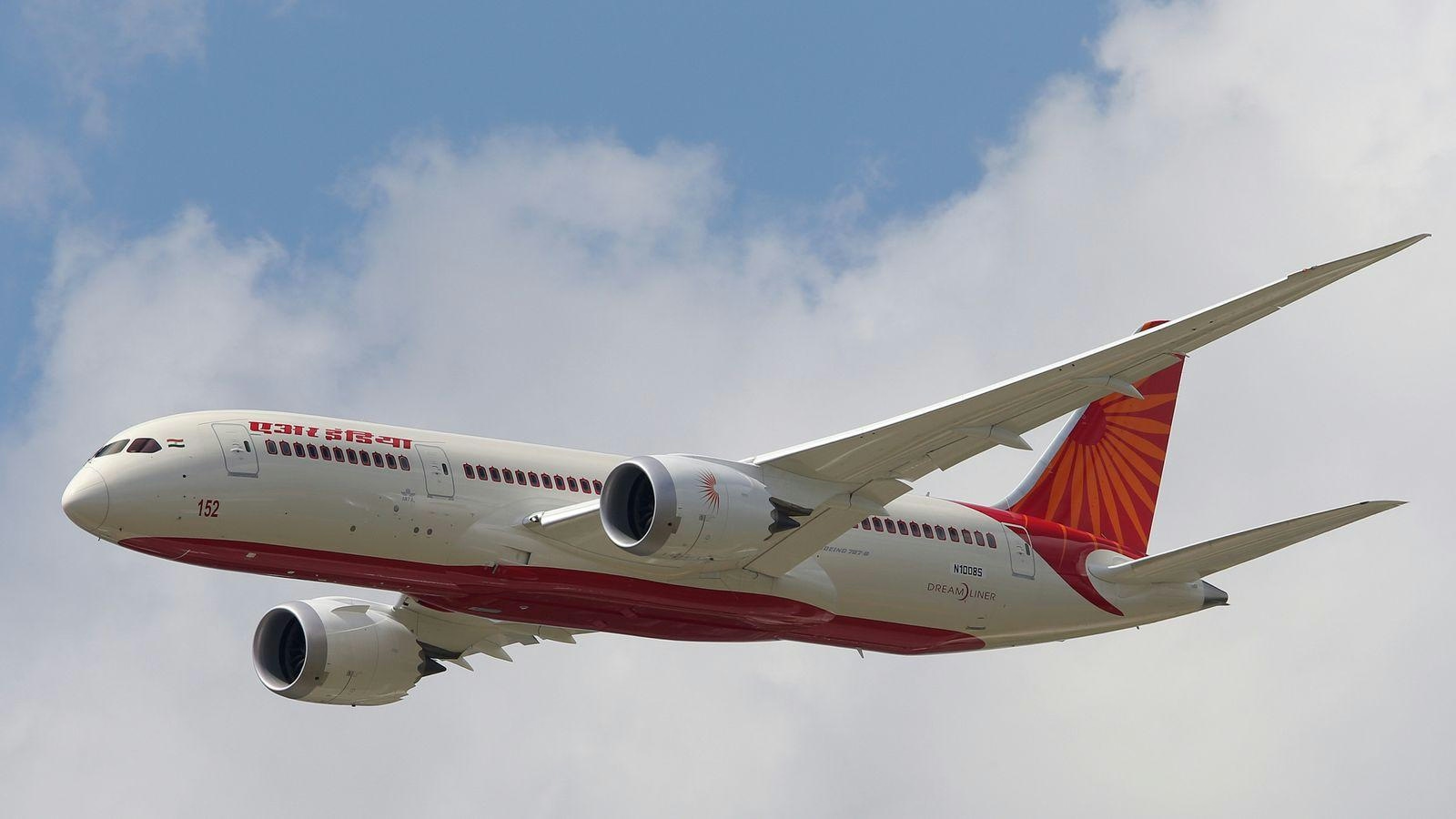
Aviation Expert Suggests Boeing 787 Software May Have Contributed to AI Crash
Aviation Expert Raises Concerns Over Boeing 787 Software in Air India Crash
Mary Schiavo, former Inspector General of the U.S. Department of Transportation and a prominent aviation attorney, has expressed serious concerns that a software-related engine thrust rollback malfunction in the Boeing 787 may have played a role in the recent crash of Air India Flight AI-171. In an exclusive interview with *The Sunday Guardian*, Schiavo highlighted a known issue previously examined by the U.S. National Transportation Safety Board (NTSB), where the aircraft’s computer systems could mistakenly reduce engine thrust during flight.
Drawing on her extensive experience overseeing major air safety investigations and representing families affected by aviation disasters, Schiavo emphasized the risks posed by Boeing’s involvement in its own crash investigations. She called on India’s Directorate General of Civil Aviation (DGCA) to undertake a comprehensive and independent inquiry, particularly given the complexity of the Boeing 787’s software systems.
Software Malfunction and Regulatory Concerns
Central to Schiavo’s warning is the Thrust Control Malfunction Accommodation (TCMA) system, mandated by the Federal Aviation Administration for the Boeing 787. The TCMA operates in conjunction with the Full Authority Digital Engine Control (FADEC) system, relying on computer inputs to determine whether the aircraft is airborne or on the ground. If these systems incorrectly classify the aircraft’s status, they may automatically adjust engine settings, potentially reducing thrust without any pilot intervention.
Schiavo referenced a 2019 incident involving Japan’s All Nippon Airways (ANA), where a similar dual engine thrust rollback occurred. The NTSB investigation into that event identified the issue as a software design flaw and led to corrective measures across the 787 fleet. According to Schiavo, such computer-triggered thrust reductions would leave distinct signatures in the flight data recorder, which investigators should carefully analyze in the case of AI-171.
Wider Implications for Boeing and the Aviation Industry
The possibility that Boeing 787 software contributed to the Air India crash is expected to heighten scrutiny from aviation regulators worldwide. Should software faults be confirmed, both Boeing and Air India could face significant legal consequences. The incident may also prompt a broader reassessment of software-related risks within the 787 fleet. Schiavo drew parallels to Boeing’s handling of the MCAS software issue, which previously sparked global controversy and regulatory intervention.
Beyond regulatory and legal ramifications, the crash carries immediate consequences for the global aviation insurance market. Industry analysts warn that insurance and reinsurance premiums could increase, particularly in India, where the aviation insurance sector has already been grappling with financial losses. Competitors may leverage the situation to highlight their own safety records and technological advancements, potentially affecting Boeing’s market position.
For Air India, the crash presents a critical challenge to its Vihaan.AI transformation program, which aims to elevate the airline to world-class status within five years. The investigation’s outcome and the airline’s subsequent response will be closely monitored by regulators, insurers, and the traveling public.
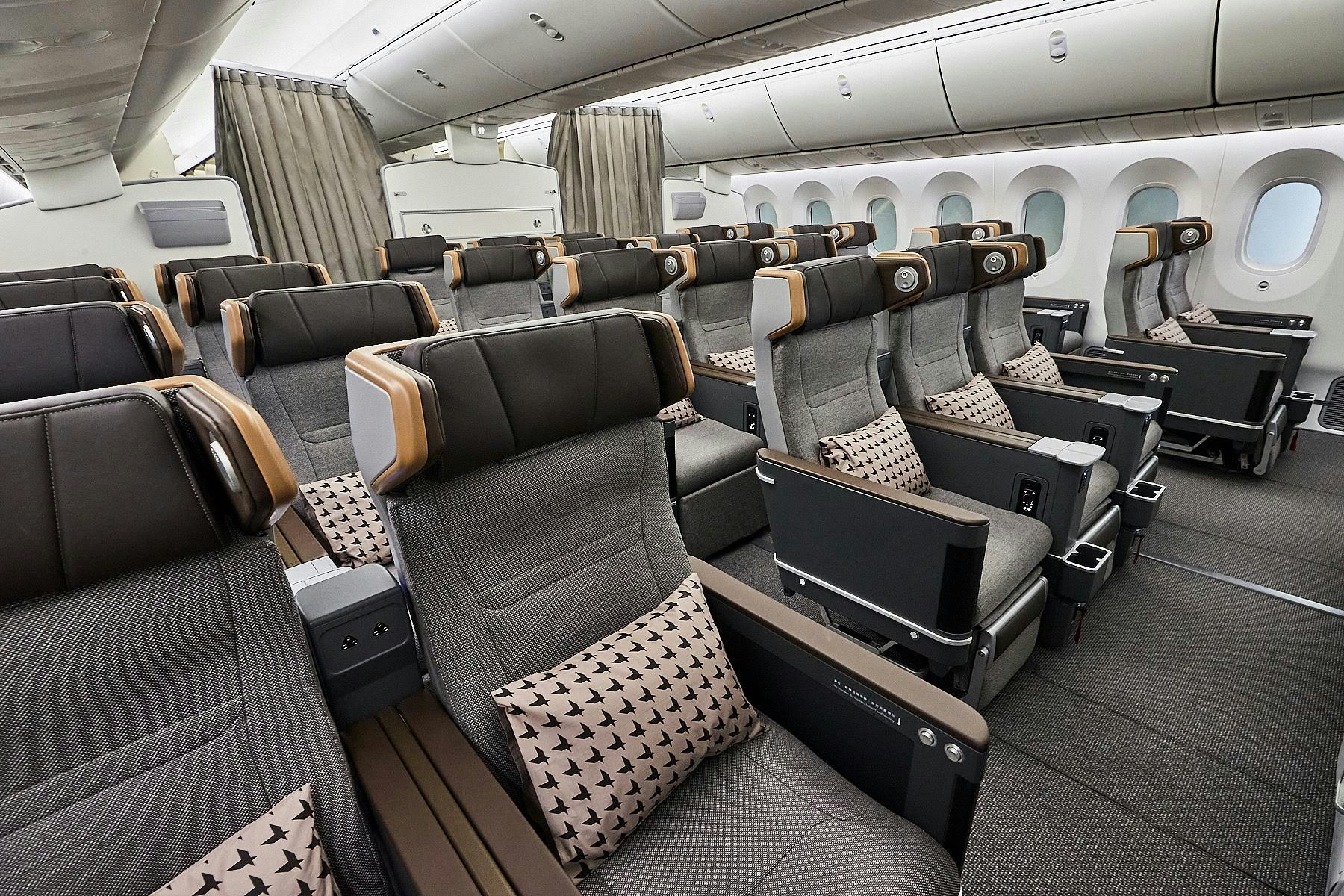
Air Ghana Plans Passenger Operations Launch by Late Fourth Quarter 2025
Air Ghana Plans Passenger Service Launch by Late 2025
Air Ghana is preparing to expand its operations into the passenger airline market, targeting a launch by the end of the fourth quarter of 2025. This strategic move marks a significant shift from its current focus on cargo services. The airline has begun recruiting sales, ticketing, and call centre personnel, indicating its commitment to broadening its service portfolio. Although no formal public announcement has been made, job postings on social media and a statement to Aviation Ghana confirm that Air Ghana is in the intermediate stages of developing its passenger operations, with the launch dependent on fulfilling all regulatory and operational requirements.
Fleet and Market Positioning
The airline plans to deploy a Boeing 737 for its passenger routes. Presently, Air Ghana operates regional night cargo and courier services for DHL International, utilizing a fleet that includes a B737-400(F) leased from Swiftair, alongside additional aircraft wet-leased from Swiftair and AirExplore. The introduction of passenger services will position Air Ghana alongside Ghana’s two established home-based passenger carriers, Africa World Airlines and PassionAir, intensifying competition within the domestic aviation sector.
Ghana’s Aviation Sector and Market Potential
The Ghanaian aviation industry is on the cusp of growth, supported by government initiatives aimed at reviving a national airline following the collapse of Ghana International Airlines in 2010. A dedicated task force is currently developing a business plan and operational framework to facilitate this revival. Despite these efforts, air travel remains underutilized in Ghana, with only 2.15% of the population traveling by air in 2024. However, projections indicate this figure could increase to 15% by 2028, revealing significant untapped potential in the market.
Competitive Landscape and Challenges
Air Ghana’s entry into passenger services occurs amid increasing competition and shifting market dynamics in West Africa. Established carriers are likely to respond with strategic adjustments in pricing, route networks, and service offerings to protect their market share. The region is experiencing a surge in new flight routes, which is expected to bolster trade and connectivity. Nevertheless, Air Ghana will face challenges including regulatory compliance and adapting to economic conditions that may influence passenger demand.
Recent industry developments highlight the competitive and operational risks inherent in the sector. Examples such as Togg’s expansion in the electric vehicle market and Alaska Air Group’s financial performance illustrate the strategic agility required to succeed. As Air Ghana advances its passenger service plans, its ability to navigate these challenges and leverage growth opportunities will be closely monitored by industry stakeholders.
Further information regarding specific routes and official launch dates is anticipated as Air Ghana progresses through the regulatory approval process.

Investigation into the Crash of Flight AI 171
Investigation into the Crash of Flight AI 171
The investigation into the crash of Air India Flight 171 has generated significant controversy, leaving both aviation experts and the public with unresolved questions. The official report issued by the Aircraft Accident Investigation Bureau (AAIB) appears to deflect critical scrutiny by concentrating predominantly on the role of the Fuel Control Switches (FCS). This focus frames the switches as either a site of pilot error or mechanical malfunction, a narrative that implicitly directs suspicion—and potentially blame—toward the flight crew.
Ambiguities in the Official Report
The AAIB report selectively quotes cockpit voice recordings, which suggest confusion and miscommunication during the flight. However, these excerpts remain vague and insinuate pilot fault without explicitly stating it. More notably, the report offers only a cursory examination of the Full Authority Digital Engine Control (FADEC) system, a crucial component in modern jet engines. FADEC functions as the digital control center capable of managing engine performance and can initiate a dual engine shutdown if it malfunctions or misinterprets sensor data. Given that both engines failed within three seconds of takeoff, coinciding with the FCS allegedly moving to cutoff, a thorough forensic analysis of FADEC’s involvement would be expected. Instead, the report largely overlooks this critical aspect.
This omission is particularly troubling in the context of recent industry developments. The U.S. Federal Aviation Administration and Boeing have reaffirmed the safety of fuel cutoff switch locks amid ongoing investigations. These reassurances come at a time when stakeholders, insurers, and competing airlines are intensifying their scrutiny of safety protocols in response to the incident.
Questions Surrounding Data Integrity and Investigative Rigor
The AAIB report also raises concerns due to factual inconsistencies. It asserts that despite the aft Enhanced Airborne Flight Recorder (EAFR) being completely destroyed and the forward EAFR damaged, data was successfully retrieved via the so-called Golden Chassis. If the investigation’s conclusions rely on this data, the presence of numerous inaccuracies calls into question the reliability of the findings. There is even speculation that the EAFR data itself may have been compromised. In an era where artificial intelligence can convincingly replicate voices, the integrity of cockpit voice recordings must be beyond reproach to maintain confidence in the investigation.
From the perspective of experienced pilots, the narrative presented by the AAIB does not align with operational realities. It remains highly questionable whether the Fuel Control Switches were deliberately moved to cutoff or if the engines failed independently. The report’s omissions—most notably the absence of altitude data, comprehensive engine telemetry, and a full transcript of pilot communications—further fuel suspicions that the investigation may prioritize damage control over uncovering the truth.
The lack of altitude traces during the critical climb phase is especially alarming. Altitude data is fundamental in any commercial aircraft accident investigation, and its absence raises serious concerns about either the suppression of evidence or insufficient investigative rigor. Additionally, inconsistencies in the reporting of landing gear status complicate the overall picture, as standard operating procedures require gear retraction within seconds of takeoff.
As the investigation proceeds, the aviation community and the public await a more transparent and comprehensive account—one that addresses not only the actions of the flight crew but also the potential for systemic or technological failures. Until such clarity is provided, the distress and uncertainty among flight crews and stakeholders remain unresolved.
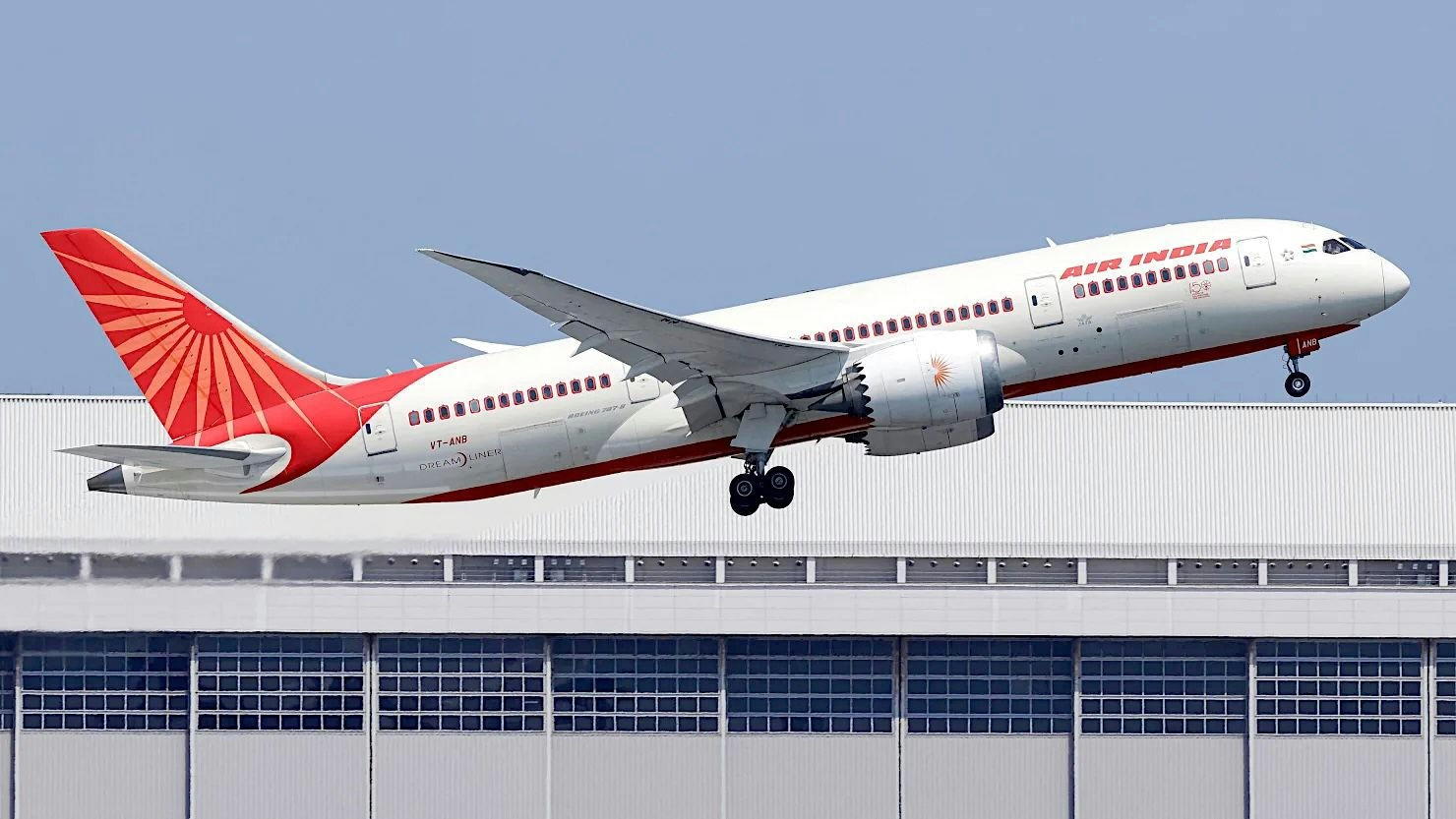
Aviation Expert: Boeing Dreamliner Software Reduced Fuel Use Twice Without Pilot Input
Aviation Expert Highlights Boeing Dreamliner Software’s Role in Fuel Cut Incidents
Aviation attorney and former US Department of Transportation Inspector General Mary Schiavo has cautioned against hastily attributing blame to pilots in the aftermath of the recent Air India crash. She underscored the significance of Boeing Dreamliner’s automated systems, which have been implicated in previous incidents involving unexpected fuel reductions without pilot intervention. Schiavo emphasized that the Boeing 787’s software is capable of independently cutting fuel to its engines, a factor that demands thorough investigation before fault is assigned.
Speaking to journalist Barkha Dutt, Schiavo noted that pilots are often blamed in approximately 75% of aviation incidents, yet many such accusations have been disproven. She described this tendency as not only unfair but overly simplistic and potentially harmful. “There are too many suspicious things to say, ‘Oh, it’s the pilots,’” she remarked, referencing earlier cases involving the same aircraft model where onboard systems autonomously reduced or cut fuel flow mid-flight.
Past Incidents and the TCMA System
Schiavo specifically cited a 2019 incident involving an All Nippon Airways (ANA) Boeing 787, where the aircraft’s system erroneously shut off fuel mid-air after mistakenly detecting that the plane had already landed. The software in question, known as the Thrust Control Malfunction Accommodation (TCMA) system, has been previously implicated in similar malfunctions. Designed to help the aircraft distinguish between flight and ground conditions, the TCMA can command the engines to reduce or cut power under certain circumstances. In the ANA case, the system’s premature fuel cutoff forced the plane to glide heavily to the runway. Fortunately, the incident occurred during landing rather than takeoff, preventing a crash.
Schiavo also referenced a more recent United Airlines Dreamliner flight from Washington, D.C., to Nigeria, where the aircraft reportedly entered a nose dive due to thrust and engine issues, again raising concerns about the behavior of automated systems.
Implications for Boeing and the Aviation Industry
The TCMA system, mandated by the US Federal Aviation Administration (FAA), lies at the heart of these concerns. Schiavo warned that errors by such automated protocols can have dire consequences, particularly during critical phases like takeoff when pilots have only seconds to react. These revelations come amid heightened scrutiny of Boeing, which is already grappling with a series of safety and production challenges.
The Air India crash has intensified regulatory and public attention, prompting increased inspections of Boeing 787 aircraft operated by Air India and causing flight delays and cancellations. The incident has also sparked broader questions regarding cockpit confusion, fuel management, and the reliability of automated systems, all of which are influencing perceptions of the Dreamliner’s safety.
Meanwhile, Boeing’s competitors are leveraging the situation to highlight their own advancements in software and integrated control technologies, positioning safety features as a key competitive advantage. As Boeing seeks to restore confidence in its flagship aircraft, experts like Schiavo stress the necessity of a comprehensive investigation that carefully weighs both human and technological factors before drawing conclusions.
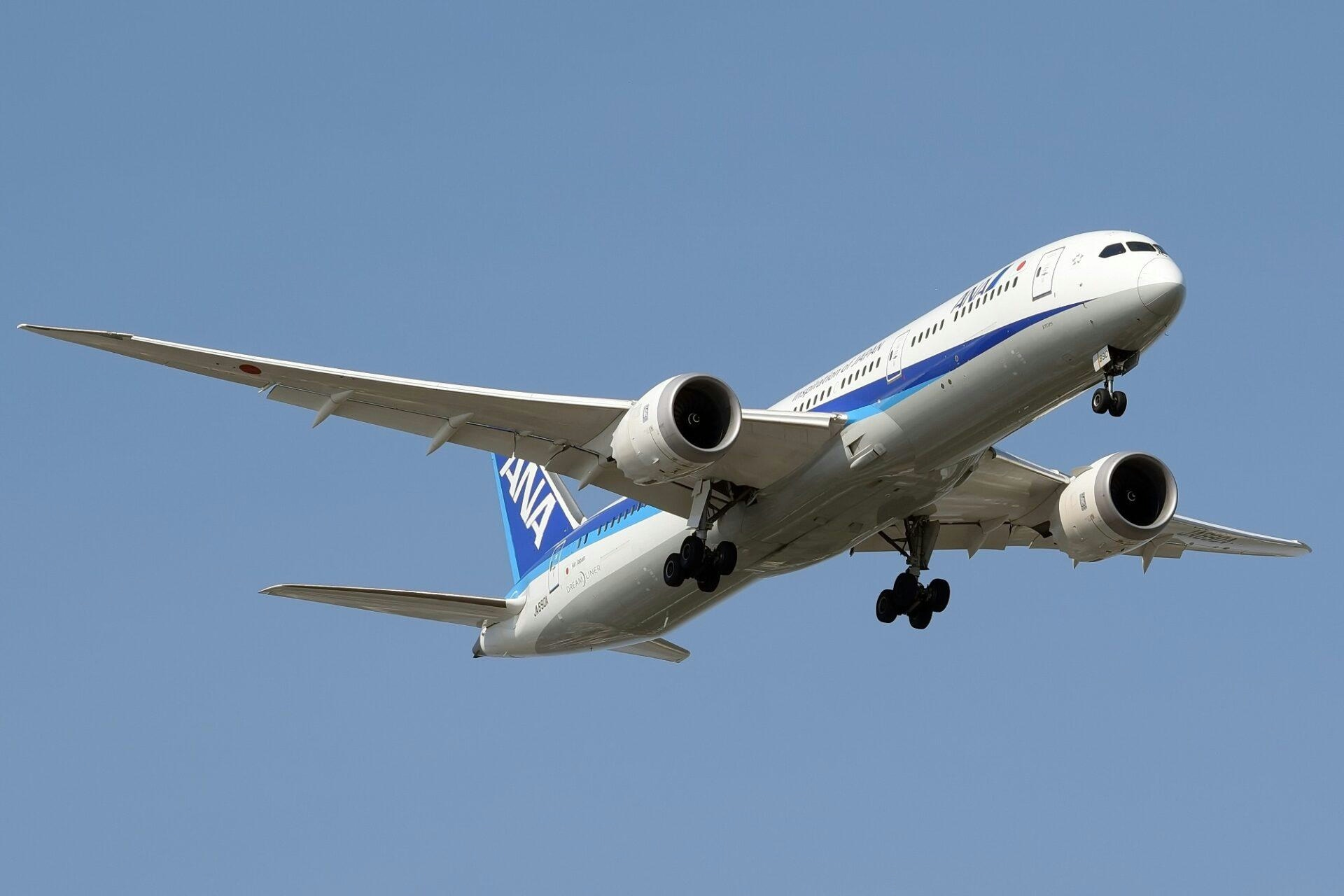
ANA Introduces AI Technology to Predict Turbulence with 86% Accuracy
ANA Introduces AI Technology to Predict Turbulence with 86% Accuracy
Advancing Flight Safety through Artificial Intelligence
All Nippon Airways (ANA) has implemented a pioneering artificial intelligence (AI) system designed to predict turbulence with an accuracy rate of 86 percent, marking a significant advancement in aviation safety and passenger comfort. Developed in collaboration with BlueWX, a company born from a partnership with Keio University, the system utilizes deep learning algorithms trained on a decade of turbulence data. This initiative positions ANA as the first airline to deploy BlueWX’s technology fleet-wide following successful trials involving 2,500 pilots.
The project, which began in 2019 and culminated in the establishment of BlueWX in 2023, addresses a longstanding challenge in the airline industry. Hiroyuki Kometani, ANA’s Executive Vice President of Operation Division, emphasized the importance of this development, stating that the integration of AI and deep learning techniques will provide a more reliable and comfortable travel experience for passengers. The AI model demonstrated superior performance compared to traditional turbulence forecasting methods during extensive testing phases that started in 2021, with pilots reporting enhanced reliability and real-world effectiveness.
Addressing a Growing Safety Concern
Turbulence remains a critical safety and operational issue for airlines globally. According to the National Transportation Safety Board (NTSB), turbulence is responsible for 30 to 50 percent of aviation incidents, with recent years witnessing serious injuries and fatalities, including the death of a British passenger in 2024. Beyond the immediate safety risks, turbulence contributes to significant economic losses through cargo damage, equipment repairs, and delays caused by unscheduled inspections.
Kaz Watanabe, CEO of BlueWX, highlighted the increasing severity of turbulence, partly attributed to climate change, and underscored the urgency of deploying advanced predictive technologies. While ANA’s AI system represents a major technological breakthrough, the airline acknowledges ongoing challenges in maintaining the model’s accuracy and reliability across diverse flight conditions and altitudes. Ensuring consistent performance in varying weather scenarios will be essential as the system is integrated more broadly.
Industry Impact and Future Prospects
The introduction of this AI-powered turbulence prediction system has been met with positive market reactions, with expectations that it will enhance passenger confidence and potentially increase demand for ANA’s services. Industry analysts anticipate that other airlines may accelerate the development and adoption of similar AI technologies to improve their turbulence forecasting capabilities, aiming to match ANA’s gains in operational efficiency and customer satisfaction.
Looking forward, BlueWX intends to expand its AI-driven weather forecasting solutions to additional airlines, seeking to elevate safety standards and operational effectiveness throughout the aviation sector. This development signals a broader shift towards leveraging artificial intelligence to address complex challenges in air travel.

Airbus Engine Shortages Highlight Risks in Aerospace Supply Chains
Airbus Engine Shortages Highlight Risks in Aerospace Supply Chains
The aerospace industry, long regarded as a cornerstone of global technological advancement, is currently grappling with significant supply chain vulnerabilities. Airbus’s recent engine shortages, which have resulted in a backlog of 60 “gliders” — airframes awaiting engines — and a 20% decline in A320neo deliveries, reveal systemic weaknesses that extend beyond a single manufacturer. These disruptions are reverberating throughout the sector, exposing the fragility of global supply chains, intensifying competitive pressures, and accelerating calls for digital transformation.
Engine Bottlenecks and Systemic Challenges
The production delays at Airbus are the outcome of a complex interplay of factors affecting key engine suppliers, notably CFM International—a joint venture between GE and Rolls-Royce—and Pratt & Whitney. Both have faced labor strikes, regulatory obstacles, and bottlenecks inherent in just-in-time manufacturing processes. By July 2025, the number of unfinished Airbus airframes had doubled, compelling the company to absorb approximately €1 billion in inventory costs. This situation reflects a broader industry trend: according to the Roland Berger 2025 report, 70% of aerospace firms now identify supply chain resilience as their foremost concern.
Compounding these challenges are global shipping disruptions. The cost of shipping from China to Europe has increased fivefold, driven by rerouting around the Red Sea and drought conditions in Central America. These factors have exacerbated material shortages and further delayed production timelines. The difficulties faced by the A350 program and the postponed integration of Spirit AeroSystems’ wing production underscore how interconnected vulnerabilities can undermine even the most sophisticated manufacturing operations.
Industry-Wide Impact and Competitive Dynamics
The repercussions of these shortages extend well beyond Airbus’s immediate operations. The aerospace supply chain is a tightly interwoven network, with many tier-2 and tier-3 suppliers operating on minimal margins. Labor shortages, geopolitical tensions—such as ongoing U.S.-China trade disputes—and residual effects of the COVID-19 pandemic have created a volatile environment. Recent strikes at Pratt & Whitney, for instance, disrupted the delivery of GTF engines, triggering cascading delays across the production chain.
These disruptions have also contributed to market volatility, with affected companies experiencing fluctuating stock prices and diminished consumer confidence. In response, competitors are accelerating the development of alternative engines and enhancing collaboration to mitigate supply chain risks. This heightened competition is prompting manufacturers to reconsider sourcing strategies and invest in more resilient operational models.
Digital Transformation and Strategic Investment
In the face of these challenges, the aerospace industry is undergoing a rapid transformation. The Aviation Supply Chain Integrity Coalition, established in 2024, has drawn attention to the increasing threat posed by counterfeit parts, encouraging companies to adopt advanced technologies such as digital twins and blockchain-based tracking to verify component authenticity. This technological shift is reshaping investment priorities and risk management approaches.
Investors are concentrating on three principal areas. First, digital supply chain solutions are gaining prominence, with platforms from SAP and PTC—particularly PTC’s Windchill—enabling real-time tracking, predictive maintenance, and AI-driven inventory optimization. PTC’s collaboration with Boeing, for example, has reduced component lead times by 18%. Second, resilient manufacturing infrastructure is becoming a priority, with localized production and 3D printing technologies advancing rapidly. Companies like GE Additive and 3D Hubs report that aerospace now accounts for 40% of their revenue, while advanced air mobility infrastructure, led by firms such as Joby Aviation and Wisk Aero, is projected to evolve into a $2 trillion market by 2030. Third, supplier diversification through vertical integration and securing alternative sources is proving essential. Airbus’s delayed acquisition of Spirit AeroSystems has compelled the company to explore new sourcing strategies to maintain its competitive edge.
Navigating an Evolving Aerospace Landscape
The engine shortages confronting Airbus serve as a stark illustration of the aerospace sector’s vulnerability to global disruptions. As supply chain risk management becomes increasingly critical, aerospace companies and investors must adapt to a rapidly changing environment, balancing innovation with resilience to safeguard the industry’s future.
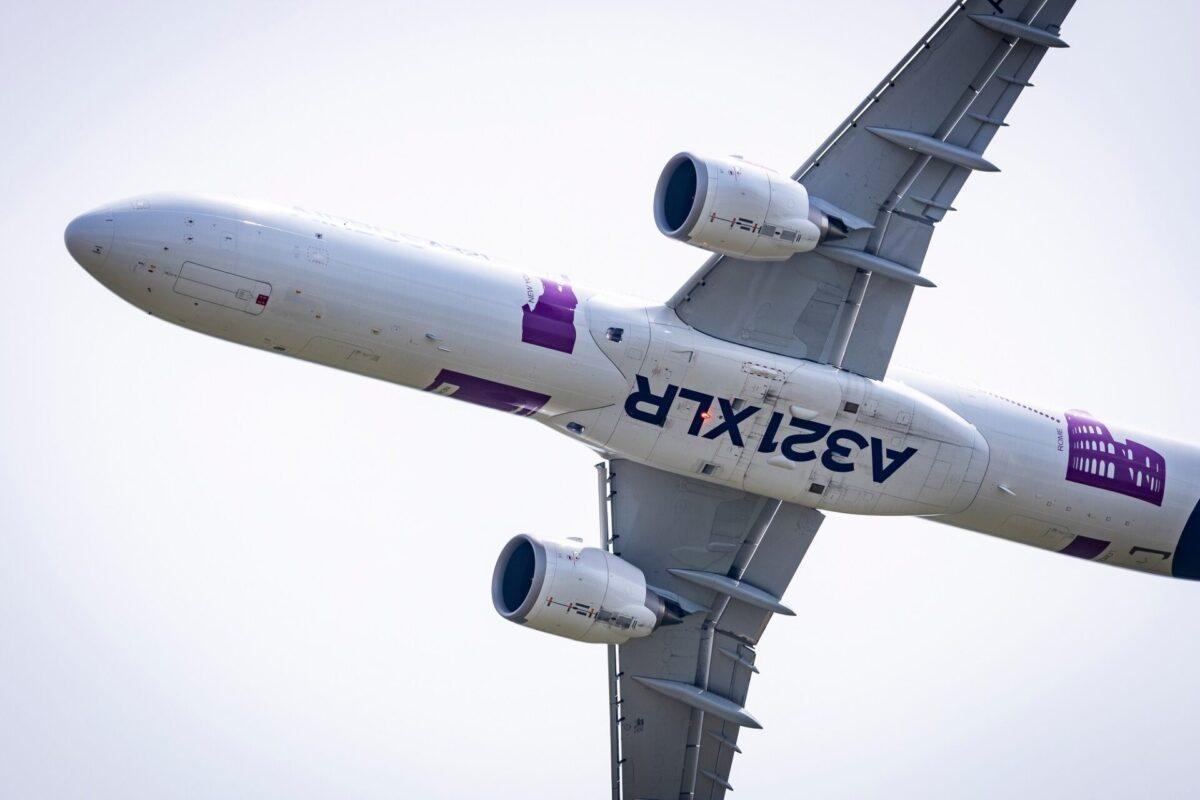
IndiGo A321XLR Delivery Timeline and Potential New Routes
IndiGo’s A321XLR Delivery Timeline and Expansion Strategy
India’s largest low-cost carrier, IndiGo Airlines, is preparing to receive its first Airbus A321XLR aircraft, now anticipated in December 2025. This new addition to the fleet is expected to significantly extend the airline’s international reach, enabling direct flights on longer routes that were previously inaccessible with its narrow-body aircraft. However, industry-wide production and supply chain disruptions pose risks to the delivery schedule, potentially affecting IndiGo’s ambitious global expansion plans.
The A321XLR, boasting a range of approximately 8,700 kilometers, will allow IndiGo to operate nonstop flights from major Indian hubs such as Delhi, Mumbai, and Hyderabad to destinations including Seoul, Athens, and Nairobi. These routes are central to the airline’s growth strategy through 2030, as it currently operates over 2,200 daily flights to more than 140 destinations across Asia, Europe, and Africa. IndiGo has placed an order for 69 A321XLRs, aiming to strengthen its presence in Europe, Northeast Asia, and East Africa.
CEO Pieter Elbers has described the A321XLR as a critical link between the airline’s existing A321neo fleet and its forthcoming long-haul Airbus A350 services, scheduled to commence in 2027. The extended range of the XLR model, which adds up to two hours of additional flying time, will open new markets such as Denpasar, Athens, and Nairobi, while reinforcing IndiGo’s foothold in established international sectors.
Challenges and Competitive Landscape
Despite these promising developments, IndiGo faces significant challenges. Delays in aircraft production and supply chains threaten to slow the introduction of the A321XLR, potentially postponing the launch of new long-haul routes and the planned rollout of business class services. These uncertainties have elicited mixed responses from investors, with some expressing concern over the impact on the airline’s expansion timeline, while others remain confident in IndiGo’s long-term growth prospects.
Competition is intensifying, notably from carriers such as Aegean Airlines, which is reportedly considering India for its initial A321LR routes. This emerging rivalry could affect key markets that IndiGo is targeting with its expanded fleet.
In response, IndiGo is advancing a multi-hub strategy designed to optimize fleet utilization and operational efficiency. Mumbai is positioned as the gateway to West Asia, Delhi will focus on Central Asia, and Hyderabad will support niche domestic and regional routes. This approach is intended to sustain and enhance the airline’s long-haul services.
To further strengthen its international network, IndiGo has established partnerships with major global airlines including Delta, Air France-KLM, Virgin Atlantic, and Japan Airlines. These alliances, facilitated through codeshare agreements, will extend IndiGo’s connectivity to over 30 cities across Europe and North America. Additionally, the airline has increased its order for wide-body Airbus A350s and plans to introduce Boeing 787 aircraft, diversifying its fleet and enabling direct service to high-demand long-haul destinations.
Leveraging India’s strategic geographic location—where 65% of the world’s population is within a five to six-hour flight—IndiGo aims to reduce dependence on foreign hubs and develop a self-reliant medium- and long-haul network. While supply chain delays present tangible obstacles, the airline remains focused on transforming its international connectivity and establishing itself as a globally competitive carrier.
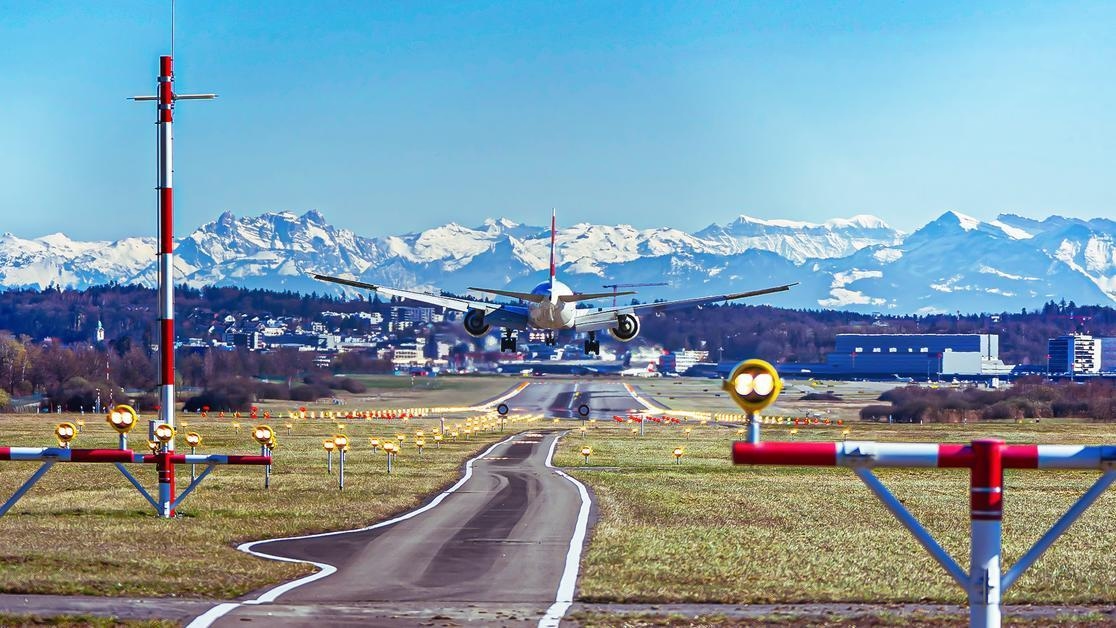
Airline Holds Last Outstanding Order for Boeing 777-300ER Passenger Jets
Pakistan International Airlines Holds the World’s Last Outstanding Order for the Boeing 777-300ER
As Boeing prepares to transition to its next generation of long-haul aircraft with the 777X, the company is drawing to a close the production of its widely acclaimed 777-300ER passenger jet. This shift marks a pivotal moment in commercial aviation history, with Pakistan International Airlines (PIA) now holding the world’s final unfulfilled order for the passenger variant of the Boeing 777-300ER—a contract that appears increasingly unlikely to be completed.
The End of an Iconic Aircraft
The Boeing 777 family, launched in 1995 with United Airlines as its inaugural customer, has become one of the most successful widebody aircraft series in aviation history. Since its introduction, Boeing’s Everett, Washington facility has delivered 1,735 units. The 777-300ER model, in particular, established itself as a cornerstone for many international carriers due to its range and reliability. However, as Boeing shifts its focus to the more advanced 777X, expected to enter service in 2026, production of the 777-300ER is winding down.
Currently, only five passenger 777-300ERs remain on Boeing’s order books, all attributed to PIA. This order, originally placed in 2012 and valued at approximately $1.5 billion, was intended to expand PIA’s 777 fleet to 14 aircraft. More than a decade later, these jets remain undelivered, and both Boeing and industry analysts have expressed skepticism about whether the order will ever be fulfilled.
Declining Production and Market Evolution
The tapering off of 777-300ER deliveries reflects broader shifts within the aviation industry toward newer, more fuel-efficient aircraft. Deliveries of the model peaked at 88 units in 2016 but have since declined sharply, with only a single aircraft delivered in 2024 to the leasing company Altavair LP. Since 2020, Boeing has delivered just 15 passenger 777-300ERs, with recent customers including Aeroflot, BOC Aviation, United Airlines, and KLM.
While Boeing continues to manufacture the 777F freighter variant—with 78 orders still outstanding—the passenger 777-300ER is effectively at the end of its production lifecycle. Boeing’s current order backlog includes 604 777 aircraft, comprising 521 next-generation 777Xs and 83 previous-generation models, predominantly freighters.
Market Uncertainty and Competitive Dynamics
PIA’s unresolved order for the 777-300ER underscores the uncertainty facing airlines as they navigate the transition to new aircraft technologies. While the 777X promises significant advancements in aerodynamics, materials, and engine performance, some carriers remain cautious due to development delays and evolving market conditions.
Boeing’s strategic emphasis on the 777X opens the door for competitors to capture market share, as some customers hesitate to commit to the new model. The 777X is positioned to become a central component of future long-haul fleets, offering enhanced efficiency and passenger comfort, but its ultimate success will depend on sustained market confidence and timely delivery.
As Boeing phases out the 777-300ER, PIA’s outstanding order stands as a symbolic marker—the conclusion of a remarkable chapter for one of aviation’s most successful widebody jets and the onset of a new era defined by technological innovation and shifting airline priorities.

FAA Issues Rule Permitting Drones to Operate Beyond Visual Line of Sight
FAA Issues Rule Permitting Drones to Operate Beyond Visual Line of Sight
The Federal Aviation Administration (FAA) has announced a landmark regulatory change permitting commercial drones to operate beyond the visual line of sight of their operators. Transportation Secretary Sean Duffy unveiled the new rule on Tuesday, describing it as a pivotal step toward advancing American leadership in drone technology. The FAA’s comprehensive 731-page document outlines the Beyond Visual Line of Sight (BVLOS) rule, which aims to dismantle longstanding regulatory barriers that have constrained the commercial use of drones.
Expanding Operational Capabilities for Commercial Drones
Under the new regulation, drones weighing up to 1,320 pounds will be allowed to fly below 400 feet above ground level without the operator maintaining direct visual contact. This marks a significant departure from current requirements, which mandate that operators keep drones within their line of sight or obtain waivers to fly otherwise. To date, the FAA has issued 657 such waivers, including to major companies like Amazon, which employs drones for delivery services. Secretary Duffy criticized the waiver process as overly burdensome and emphasized that the new rule will transform how drone operations are approved, enabling innovators and businesses to expand their use of drone technology across various sectors.
The rule is expected to have a profound impact on industries such as manufacturing, agriculture, energy, filmmaking, and medical delivery. Duffy highlighted the necessity of the regulation for these sectors to operate more efficiently and effectively, stating, “Industry needs this rule to ensure they can use this technology to do business more efficiently and effectively.”
Safety, Security, and Industry Response
To address safety concerns, the rule requires drones to be equipped with collision avoidance technology. Additionally, the FAA will collaborate with the Transportation Security Administration (TSA) to ensure that operations supervisors and flight coordinators undergo thorough vetting, thereby mitigating security risks associated with expanded drone operations.
While the rule is anticipated to foster innovation and enhance operational efficiency, it also raises concerns related to regulatory compliance, safety, and privacy. Agricultural and delivery sectors have welcomed the expanded capabilities, anticipating increased productivity and the emergence of new business models. Conversely, general aviation groups and privacy advocates have expressed apprehension about the potential risks posed by increased drone traffic and surveillance.
The regulatory shift is expected to accelerate technological advancements as companies strive to meet BVLOS requirements and capitalize on new market opportunities. Providers of drone technology are likely to experience heightened demand for solutions that address safety and compliance challenges.
Regulatory Development and Next Steps
The BVLOS rule has been in development for over five years, with President Donald Trump playing a key role in its advancement. In June, Trump signed an executive order directing the FAA to proceed with the rule’s implementation. Secretary Duffy acknowledged the President’s leadership in facilitating innovation while maintaining safety standards, stating, “I’m grateful for the President’s leadership. He has been remarkable in clearing the way for innovation while maintaining our safety mission.”
Before the rule can be enacted, it will undergo a 60-day public comment period, allowing stakeholders and the public to provide feedback on the proposed regulatory framework.
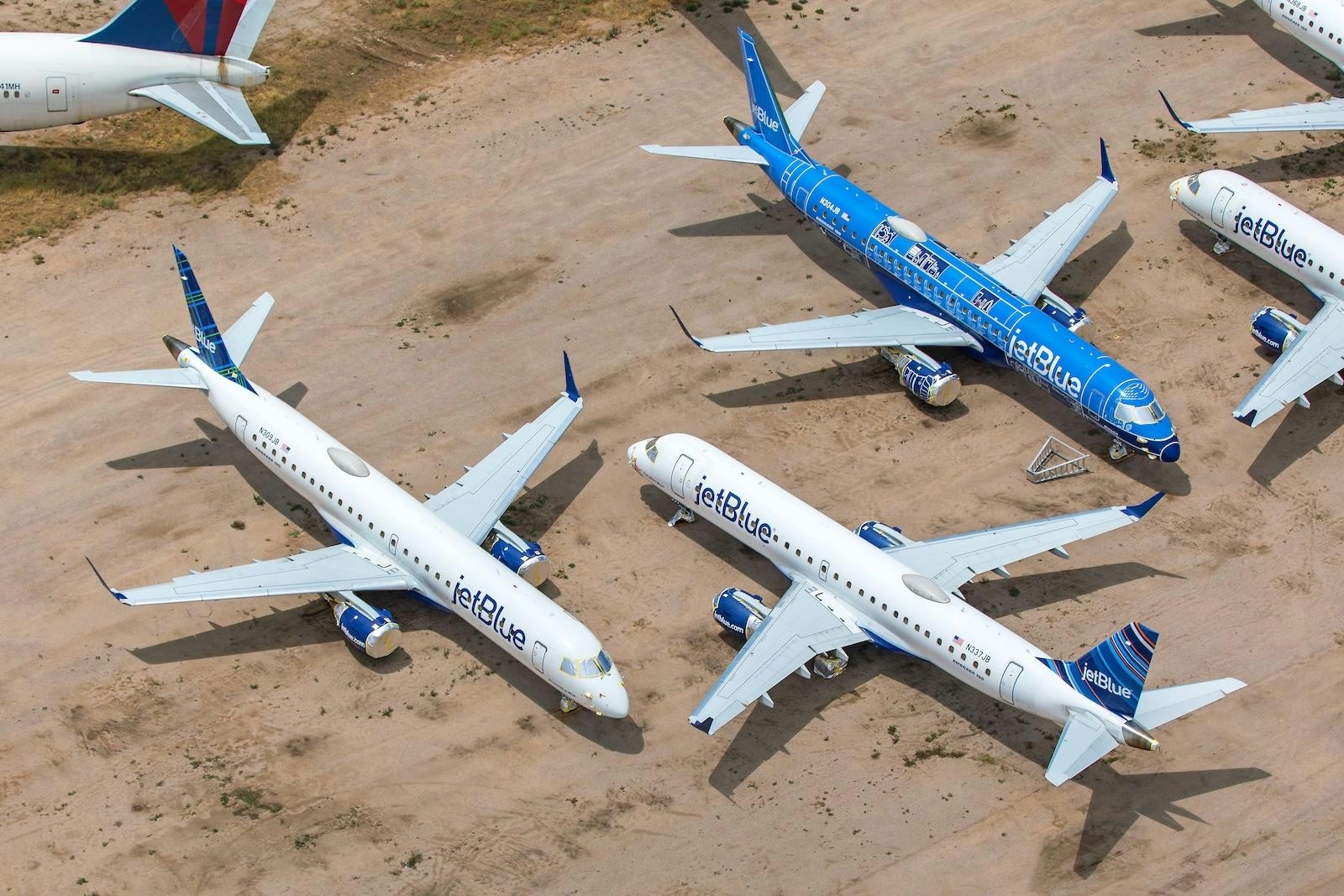
JetBlue Sells 12 Embraer E190s Ahead of Fleet Retirement
JetBlue Sells 12 Embraer E190s Ahead of Fleet Retirement
JetBlue Airways has finalized the sale of 12 Embraer E190-100 aircraft along with 12 CF34-10E6 engines to Werner Aero, a specialist in the aviation aftermarket. This transaction aligns with JetBlue’s ongoing plan to retire its E190 fleet. Werner Aero confirmed on August 5, 2025, that the aircraft and engines will be delivered to Ascent Aviation’s maintenance, repair, and overhaul (MRO) facility in Marana, Arizona, between June 2025 and February 2026.
Strategic Acquisition for Werner Aero
Werner Aero views this acquisition as a strategic move to bolster its position in the high-demand E-Jet aftermarket segment. Tony Kondo, CEO of Werner Aero, emphasized the company’s commitment to supporting the E-Jet platform, stating that the addition of these twelve aircraft will enhance customer access to quality assets. This, in turn, is expected to improve fleet reliability and help reduce operational costs for operators relying on these jets.
Context and Implications for JetBlue and the Industry
JetBlue’s decision to divest its E190s comes at a critical juncture for the U.S. aviation sector, which is showing signs of recovery following a period of downturn. Reports from The Wall Street Journal and Reuters highlight improving demand and a rebounding travel market. Nevertheless, the sale introduces certain challenges. Aviation Week Network has noted that tariffs imposed on Embraer could influence the aftermarket value and operational expenses related to these aircraft. Furthermore, competitors may adjust their fleet strategies in response to JetBlue’s transition, potentially intensifying competition within the sector.
According to ch-aviation data, JetBlue currently operates nine Embraer E190-100s, with an additional 26 aircraft listed as inactive. The airline was the launch customer for the E190-100 model in 2005, initially ordering 101 aircraft with options for 100 more. The first 100-seat E190-100 entered service on November 8, 2005, operating between Boston Logan International Airport and New York John F. Kennedy International Airport. To celebrate the launch, JetBlue famously offered free BOS-JFK flights to 190 people dressed in blue in Manhattan.
JetBlue plans to retire its remaining E190-100s by September 4, 2025, marking the conclusion of a significant chapter in the airline’s history. The market’s response to this fleet transition will likely be shaped by broader economic trends and the evolving competitive dynamics within the aviation industry.
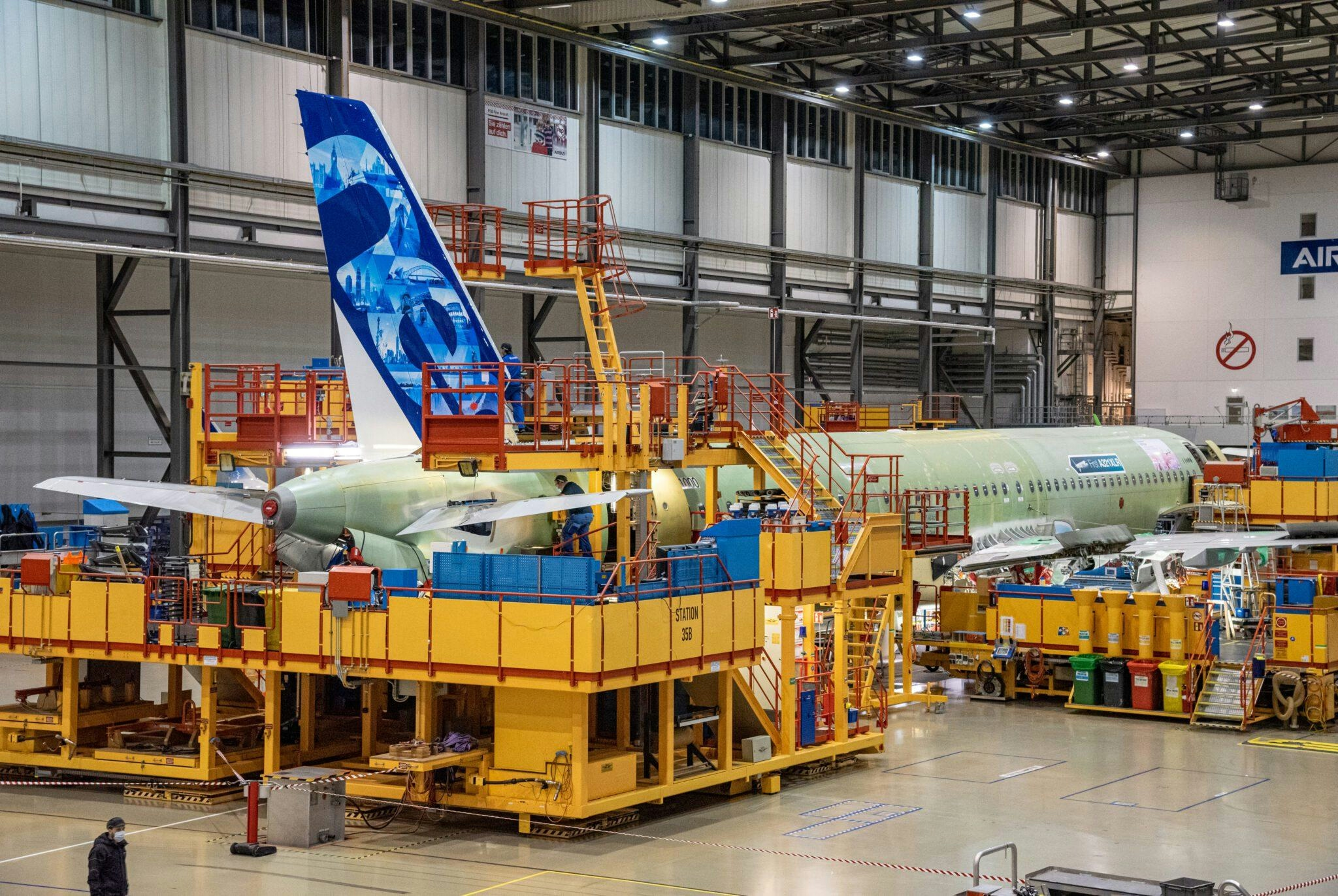
Airbus Reports Engine Delays but Maintains Jet Delivery Targets
Airbus Reports Engine Delays but Maintains Jet Delivery Targets
Rising Engine Shortages Amid Production Challenges
European aerospace giant Airbus has revealed a growing backlog of completed aircraft awaiting engine installation, yet it remains committed to its ambitious delivery target for 2024. The company reported that 60 “gliders”—fully assembled airframes without engines—are currently parked outside its factories, a significant increase from 40 units just a month prior. Despite these mounting delays, Airbus CEO Guillaume Faury assured analysts that engine suppliers have pledged their support to help the manufacturer meet its goal of delivering 820 aircraft this year, representing a 7% increase over 2023. Faury acknowledged the challenges ahead, noting that the delivery schedule would be “more back-loaded than we would like,” but emphasized the company’s determination to adhere to its targets.
The primary source of the engine supply bottleneck remains CFM International, a joint venture between GE Aerospace and Safran, which continues to grapple with production difficulties. Compounding the issue, rival engine supplier Pratt & Whitney, owned by RTX, has recently experienced disruptions following a strike, introducing new delays. While Airbus indicated that most of the engine shortages are still attributable to CFM, both engine manufacturers declined to comment on the situation.
Market Concerns and Financial Performance
The persistent engine shortages have sparked investor concerns regarding Airbus’s ability to sustain its competitive position against Boeing and GE Aerospace. Market reactions have been mixed, with some investors apprehensive about the potential impact on future deliveries and profitability. Boeing, meanwhile, is recovering from its own production setbacks, and GE Aerospace is benefiting from increased demand for aftermarket engine services.
Despite a 5% decline in deliveries during the first half of 2024, Airbus has maintained narrow-body jet production close to pre-pandemic levels to prevent further supply chain disruptions. This accelerated production pace, however, has resulted in a buildup of inventory and increased cash outflows. In the second quarter, Airbus reported cash burn exceeding analyst expectations by €1 billion ($1.14 billion), though it reaffirmed its full-year financial guidance.
Financially, Airbus delivered a stronger-than-expected second-quarter performance. Adjusted operating profit nearly doubled to €1.58 billion, while revenues remained steady at €16.07 billion. These results slightly surpassed analyst forecasts, particularly driven by robust performances in the Defence and Space and Helicopters divisions. Analysts had anticipated adjusted operating income of €1.47 billion on revenues of €15.78 billion, according to a company-compiled consensus.
Strategic Outlook and Industry Developments
Looking forward, Airbus announced plans to increase production of its A330neo wide-body aircraft from four to five units per month by 2029, citing rising market demand. Other production targets will remain unchanged. CEO Guillaume Faury also welcomed a recent agreement between the European Union and the United States to maintain tariff exemptions on aircraft and parts, describing it as “a welcome development for our industry.”
The ongoing engine supply challenges may also affect Airbus’s negotiations with Spirit AeroSystems, a key supplier currently undergoing division between Airbus and Boeing. Airbus anticipates completing the acquisition of certain Spirit assets in the fourth quarter, a strategic move expected to further influence its position within the global aerospace sector.

GE Aerospace Plans Expansion in Malaysia and Asia-Pacific
GE Aerospace Plans Expansion in Malaysia and Asia-Pacific
Strengthening MRO Capabilities Amid Growing Aviation Demand
GE Aerospace is poised to expand its operations in Malaysia and the broader Asia-Pacific region, focusing on enhancing its maintenance, repair, and overhaul (MRO) capabilities in response to rising global aviation demand. Nakul Gupta, GE Aerospace’s vice-president of sales for Asia-Pacific, emphasized Malaysia’s strategic importance, highlighting the Subang facility as a critical hub for both regional and global operations.
Established in 1997 as a Centre of Excellence for CFM56 engines, the Subang site has grown into a vital MRO centre supporting over 50 airlines worldwide. It now serves as the Asia Centre of Excellence for LEAP engine MRO services and employs more than 700 skilled professionals. GE Aerospace plans to further increase capacity at this facility by leveraging its proprietary Flight Deck operating model, a development expected to create additional high-skilled employment opportunities.
The company’s commitment to Malaysia was reinforced by an $80 million investment in 2018 to upgrade the Subang facility, introducing MRO services for the CFM LEAP engine—the first such capability outside the United States. Gupta noted that as demand continues to grow, GE Aerospace remains dedicated to investing in infrastructure and talent development to meet evolving industry needs.
Regional Investments and Technological Advancements
In 2023, GE Aerospace invested $45 million across the Asia-Pacific region, part of a broader $250 million global investment in MRO and component repair for 2024. This investment contributes to a five-year, $1 billion commitment aimed at expanding facilities, enhancing safety protocols, and acquiring advanced test cells, tooling, and equipment across sites in Singapore, Malaysia, Taiwan, and South Korea.
Within Southeast Asia, the Singapore facility accounts for over 60% of GE Aerospace’s global repair volumes and is a leader in employing additive manufacturing technology to repair jet engine components. This technology enables repairs to be completed up to 60% faster and with a significantly smaller operational footprint, facilitating quicker aircraft turnaround times. To address increasing demand, the company is also investing in workforce development, focusing on emerging aviation technologies such as automation, robotics, and additive manufacturing.
Commitment to Sustainability and Industry Challenges
GE Aerospace has made significant strides in sustainability, with all its engines certified to operate on approved sustainable aviation fuel (SAF) blends. To date, ten engine models have been tested with 100% SAF. The company actively collaborates with fuel producers, regulators, and policymakers to accelerate the adoption and affordability of sustainable aviation fuels.
Despite its expansion plans, GE Aerospace faces challenges including regulatory compliance and intensifying competition within the region. Industry analysts suggest that while the market may respond positively to GE’s increased investment, competitors are expected to launch their own initiatives to maintain market share.
As a global provider of jet and turboprop engines, along with integrated systems for commercial, military, business, and general aviation aircraft, GE Aerospace continues to position itself at the forefront of technological innovation and regional growth in the aviation sector.
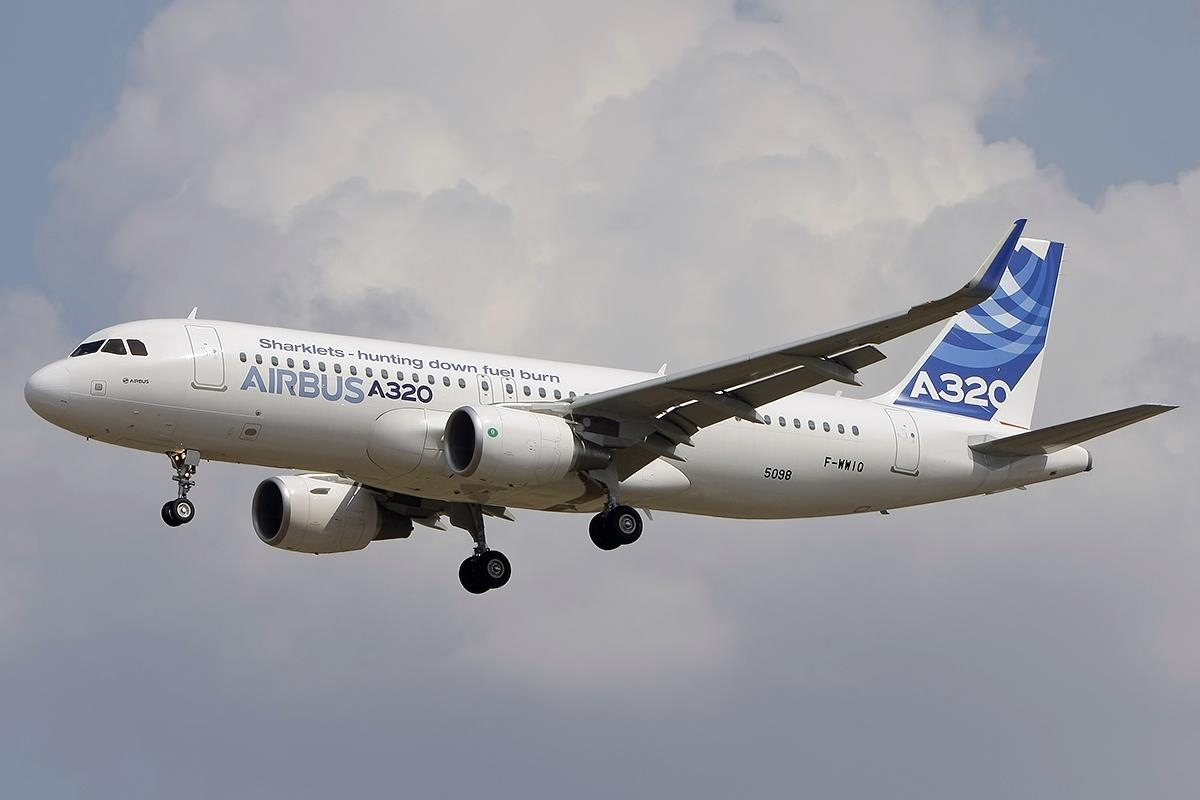
The Five Engines Used on Airbus A320 Family Aircraft
The Five Engines Powering the Airbus A320 Family
The Airbus A320 family has established itself as a cornerstone of commercial aviation, celebrated for its technological innovation and widespread adoption. Since its introduction in 1984 and first flight in 1987, the A320 series has become the world’s best-selling commercial aircraft family, surpassing the Boeing 737 in total orders by 2019. With over 19,000 orders and nearly 12,000 deliveries, the aircraft’s success is closely linked to its diverse engine options, which have played a pivotal role in its global appeal and operational versatility.
Engine Options and Their Evolution
From the beginning, Airbus adopted a strategy of offering customers a choice of engines, a decision that has significantly influenced the A320’s development. The original A320ceo (“current engine option”) models were equipped with either the CFM56-5 series from CFM International or the V2500 from International Aero Engines (IAE). More recently, the introduction of the A320neo (“new engine option”) and A321neo variants brought advanced powerplants into service: the CFM LEAP and Pratt & Whitney PW1100G engines. These newer models promise enhanced fuel efficiency and reduced emissions, aligning with the aviation industry’s increasing focus on sustainability.
CFM56-5A: The Original Workhorse
The CFM56-5A engine, developed by CFM International—a joint venture between General Electric and Safran—powered the A320’s maiden flight. Building upon earlier CFM56 models, the -5A variant offered increased thrust and incorporated advanced materials. It first powered the A320-100, the family’s initial variant, which entered service in 1988, followed by the more widely adopted A320-200. The CFM56 series has since become the most extensively used commercial jet engine globally, with over 33,000 units produced and more than one billion flight hours logged. While the majority of these engines power Boeing 737 aircraft, over 10,000 have been installed on Airbus models, underscoring their reliability and performance.
IAE V2500: Efficiency and Reliability
The V2500 engine emerged from a consortium formed in 1983, comprising Pratt & Whitney, Rolls-Royce, Japanese Aero Engine Corporation, MTU Aero Engines, and Fiat. Certified in 1988, the V2500 provided A320 operators with an alternative to the CFM56, offering comparable thrust but enhanced fuel efficiency and lower emissions due to its higher bypass ratio. Its quieter operation also made it well-suited for airports with stringent noise regulations. Over time, the V2500 has become a mainstay of the A320 fleet, valued for its dependable performance and operational economy.
New Generation Engines: CFM LEAP and Pratt & Whitney PW1100G
The advent of the A320neo and A321neo introduced two new engine options: the CFM LEAP and the Pratt & Whitney PW1100G. Both engines represent significant technological advancements, delivering marked improvements in fuel consumption, emissions reduction, and noise abatement. These developments reflect the broader industry commitment to environmental sustainability. However, the integration of these advanced engines has not been without challenges. Technical difficulties and supply chain disruptions have caused delays and increased maintenance demands, complicating production schedules for both Airbus and its airline customers.
Industry Challenges and Competitive Dynamics
Engine reliability and availability have become critical concerns for Airbus amid ongoing global supply chain disruptions and labor shortages. These factors have contributed to slower aircraft deliveries and heightened maintenance requirements. Concurrently, Boeing, Airbus’s principal competitor in the narrow-body aircraft market, is grappling with its own engine and certification challenges. This competitive environment intensifies the pressure on both manufacturers as they strive to meet growing market demand.
Despite these obstacles, the A320 family’s adaptability and broad range of engine options have solidified its position as a leader in commercial aviation. The aircraft continues to serve airlines worldwide, navigating decades of technological change and evolving industry demands.
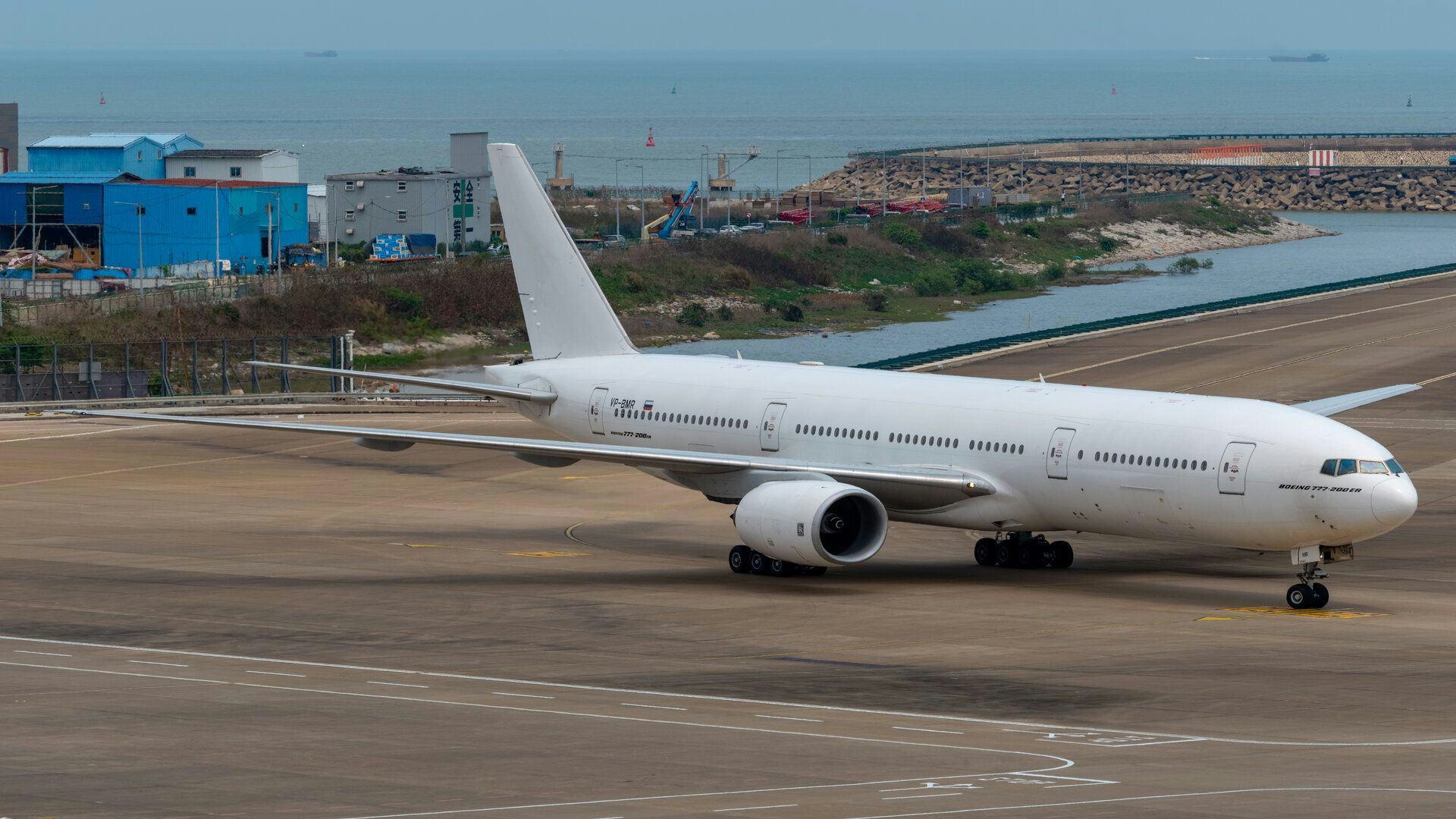
Iran Acquires Five Boeing 777s Through Malagasy Start-Up
Iran Acquires Five Boeing 777s Through Malagasy Start-Up Amid Sanctions Concerns
On July 15, 2025, five Boeing 777-200ER aircraft arrived in Iran after being ferried from Siem Reap New Angkor International Airport in Cambodia. These jets, previously registered in Madagascar under the designations 5R-RIS, 5R-ISA, 5R-HER, 5R-IJA, and 5R-RIJ, were reportedly operated by UDAAN Aviation, a fledgling start-up purporting to launch as a Malagasy carrier. Iranian media reported landings at Chah Bahar, Zahedan, and Mashad, although independent verification has so far only confirmed the arrival of 5R-HER in Mashad.
Complex Ownership and Registration History
The aircraft have a convoluted recent history. Initially operated by NokScoot until the onset of the COVID-19 pandemic, the jets were returned to the Singapore Airlines Group following NokScoot’s liquidation. After a period of storage in Alice Springs, Australia, the planes were acquired by Florida-based Ion Aviation LLC between September 2023 and February 2024 and re-registered in the United States. They were subsequently ferried to Lanzhou, China, before being deregistered from the US registry by March 2024 and exported to Hong Kong. The ownership and registration status of the aircraft after this point remain unclear.
One of the aircraft, formerly registered as N99001 and later as 5R-RIJ, was observed parked at Jakarta Soekarno-Hatta Airport between late May and early July 2025. The Civil Aviation Authority of Madagascar confirmed that all five aircraft were provisionally registered in Madagascar on January 17, 2025, under a three-month permit issued to UDAAN Aviation. The company claimed it intended to operate the aircraft itself and planned to ferry them to Kenya for maintenance. However, the Malagasy regulator stated that these permits expired on April 12, 2025, rendering any subsequent flights under the 5R- registrations illegal.
Allegations of Document Forgery and Legal Action
Further controversy emerged when the Malagasy government alleged that the ferry flights from Cambodia to Iran were conducted using falsified registration certificates, with validity dates fraudulently extended to July 12, 2025. Malagasy authorities have announced plans to pursue legal action against UDAAN Aviation for document forgery.
The ultimate operator of the aircraft in Iran has not been officially confirmed. However, local media speculate that Mahan Air, which currently operates a fleet of Airbus A340s, is the likely recipient. The airline is reportedly seeking to modernize its fleet and may transfer its older quadjets to other Iranian carriers.
International Implications Amid Sanctions
The arrival of these Boeing 777s in Iran occurs amid heightened international scrutiny due to longstanding sanctions on the country’s aviation sector. The transfer raises significant compliance concerns, particularly regarding the sourcing of maintenance and spare parts, which remain tightly restricted under existing sanctions regimes. International aviation authorities and governments critical of Iran are expected to closely monitor the situation, with some already calling for stricter enforcement of sanctions and increased oversight of Iranian aviation activities.
Currently, no other Boeing 777s are operated in Iran, making this transfer both notable and controversial within the global aviation community.

Tariff Concerns and Supply Chain Issues Impact Dassault Falcon
Tariff Concerns and Supply Chain Challenges Impact Dassault Falcon Performance
Dassault Aviation has reported a subdued performance for its Falcon business jet line in the first half of 2025, attributing the downturn to persistent supply chain disruptions and escalating concerns over potential U.S. tariffs. The French aerospace manufacturer recorded only eight Falcon jet orders during this period, a decline from 11 in the same timeframe last year, while deliveries remained steady at 12 aircraft.
Impact of U.S. Tariffs on Market Competitiveness
Chief Executive Eric Trappier emphasized the looming tariff threat as a significant factor undermining the Falcon’s competitiveness, particularly in the crucial U.S. market where Dassault faces strong competition from rivals such as Gulfstream. The U.S. government is set to impose 30% tariffs on European imports starting 1 August 2025, a development Trappier warned could severely damage Dassault’s market position. He cautioned that even lower tariff rates of 10 to 20% would render operations in the U.S. market unviable for European manufacturers, who already face inherent disadvantages compared to their American counterparts.
Dassault’s full-year guidance anticipates approximately 40 Falcon deliveries, though this forecast does not factor in the potential ramifications of U.S. tariffs or retaliatory European measures. Trappier noted that while 40 deliveries would represent a solid performance, the company could sustain itself with fewer Falcon deliveries if it increased production of its Rafale fighter jets. Nonetheless, he acknowledged that any import tax would elevate costs and place Dassault in a challenging position, despite the company’s efforts to mitigate tariff impacts by completing Falcon interiors at its facility in Little Rock, Arkansas.
Supply Chain Disruptions and Strategic Adjustments
Compounding these tariff concerns are ongoing supply chain difficulties. Trappier described persistent delays from contractors and highlighted that some suppliers are struggling to survive, undergoing restructuring or ownership changes. Although the most severe disruptions caused by the Covid-19 pandemic have largely subsided, he warned that supply chain challenges could continue for another year or two.
In response, Dassault is adjusting its production strategy by shifting some manufacturing operations to India through a joint venture. This move aims to diversify the supply chain and reduce exposure to tariff-related risks. However, the recent imposition of 50% tariffs on Canadian aluminum, effective since 4 June 2025, introduces a new complication, threatening the supply of critical materials and potentially undermining these diversification efforts.
The broader aviation industry is also reevaluating vendor networks and exploring alternative sourcing options in countries less affected by tariffs. This trend is expected to influence procurement and aircraft acquisition strategies, as competitors seek to mitigate tariff risks through supply chain diversification.
Falcon 6X Deliveries and Market Outlook
Despite these challenges, deliveries of the Falcon 6X model have increased, accounting for approximately half of all Falcon deliveries in the first half of the year and receiving positive customer feedback. However, with the Russian market closed due to sanctions and uncertainty surrounding U.S. trade relations, Trappier warned of a difficult future. He stated, “If we can’t trade with the US anymore, things are going to get really tough for us,” underscoring the critical importance of the American market to Dassault’s business jet operations.
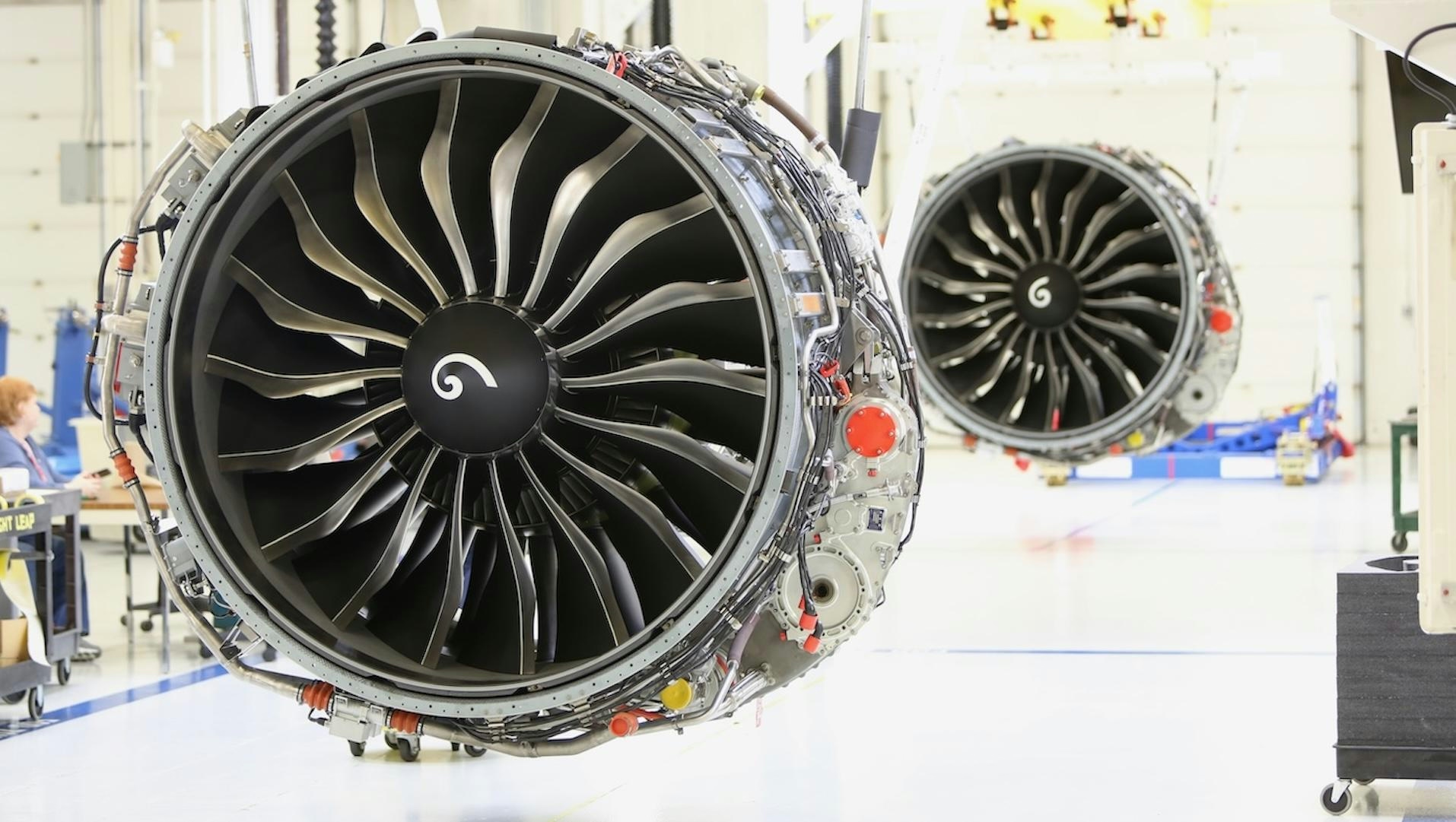
CFM Addresses Durability Issues in Initial Leap Engine Models
CFM Addresses Durability Issues in Initial Leap Engine Models
Ongoing Improvements and Certification Efforts
Safran Aircraft Engines has expressed confidence that the early durability challenges encountered with CFM International’s Leap-series engines will not persist in future iterations. Drawing on critical insights gained from current remedial measures, the company is implementing upgrades on Leap-1A engines, including the introduction of new high-pressure turbine (HPT) blades and a reverse-bleed system fix. These modifications are being deployed on Airbus A320neo-family aircraft, with approximately one-third of the Leap-1A fleet already updated.
In parallel, CFM is nearing the completion of certification for comparable durability enhancements on the Leap-1B engine, which powers the Boeing 737 Max. The Federal Aviation Administration (FAA) is expected to grant approval in the first half of 2026, facilitating the distribution of these improvements to operators. This timeline represents a delay from Safran’s earlier projection of certification within the current year.
Challenges in Harsh Operating Environments
The Leap engines, designed to deliver substantial fuel efficiency gains over their CFM56 predecessors, have encountered durability issues, particularly under severe operating conditions characterized by high temperatures and dusty environments. These conditions have led to premature wear of the HPT blades, resulting in increased maintenance requirements and reduced engine time-on-wing. Stephane Cueille, chief executive of Safran Aircraft Engines, attributed the rapid manifestation of these problems to the accelerated global adoption of the new-generation engines, which exposed them to demanding environments sooner than anticipated in previous programs.
The Leap engines operate at significantly higher temperatures to achieve improved efficiency. Despite extensive development testing, real-world operations revealed durability issues that were not fully replicated during trials. Cueille emphasized the importance of accurately simulating dust ingestion in testing protocols, noting at the Paris Air Show that “the devil is in the detail” when it comes to reflecting actual operating conditions. He underscored that these lessons are critical to the design of future engine generations.
Industry Response and Market Implications
These durability concerns have emerged amid increased regulatory scrutiny and market pressure on CFM to deliver reliable solutions. Potential delays in engine deliveries and heightened demand for durability enhancements have intensified competition within the sector. GE Aerospace, CFM’s joint venture partner, is advancing dust-ingestion testing for its GE9X engine and preparing a durability improvement kit for the Leap-1A, signaling a broader industry focus on enhancing engine reliability.
Supply chain disruptions and evolving durability challenges are reshaping the midlife aircraft engine market, with potential implications for CFM’s competitive position. In response, CFM is exploring new partnerships and service models to address maintenance demands. Notably, Turkish Technic is engaged in discussions with CFM to establish a Leap engine repair hub in Istanbul, reflecting adaptive strategies within the industry.
Cueille remains optimistic about the future, stating that new technologies are introducing novel phenomena that the company is now better equipped to address. He affirmed that these experiences will inform the design and testing of upcoming engine generations, aiming to achieve greater durability and reliability from the outset.
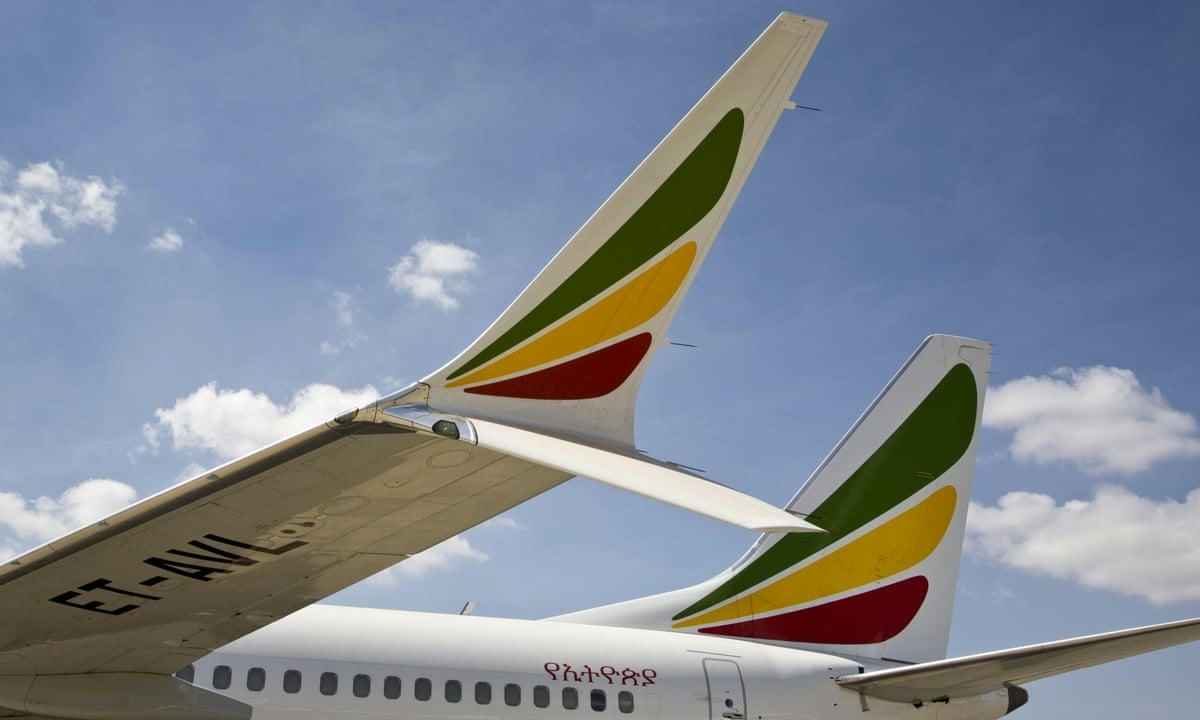
Russia Seeks Ethiopian Airlines Aircraft Amid Western Sanctions
Russia Pursues Ethiopian Airlines Partnership Amid Western Sanctions
**Addis Ababa | August 3, 2025** — Confronted with stringent Western sanctions that have severely impacted its aviation industry, Russia is actively seeking new partnerships in Africa, with Ethiopian Airlines emerging as a focal point. The sanctions have effectively barred Moscow from acquiring new Airbus and Boeing aircraft, as well as essential spare parts, prompting Russian authorities to explore alternative avenues to sustain their commercial fleet operations.
Strategic Negotiations and Potential Cooperation
In late July, Yaroslav Tarasyuk, Russia’s Trade Commissioner to Ethiopia, engaged in discussions with the Ethiopian Civil Aviation Authority (ECAA) to propose a comprehensive cooperation framework. Central to these talks was the possibility of a wet-lease agreement, which would enable Russian carriers to operate modern Western aircraft under Ethiopian registration. The negotiations also encompassed the potential supply of aviation communication and surveillance systems to Russia, alongside plans to establish a maintenance facility in Addis Ababa.
These discussions build upon the Ethiopia-Russia Air Services Agreement signed in 2024, which laid the groundwork for expanded bilateral aviation collaboration. Ethiopian Airlines, Africa’s largest and fastest-growing carrier, currently operates a fleet exceeding 120 aircraft, including Boeing 787s, Airbus A350s, and Boeing 777s, with over 60 additional planes on order. The airline’s strategic vision to become “Africa’s Aviation Hub by 2033” positions it as a valuable partner for Russia, which faces increasing isolation from Western markets.
Risks and Broader Implications
A wet-lease arrangement could provide Russian airlines with a means to circumvent certain sanctions by operating Western-manufactured jets under Ethiopian registration. However, such a strategy carries significant risks, potentially attracting scrutiny from the European Union and the United States. This could jeopardize Ethiopian Airlines’ access to Western airspace, a critical component of its international operations. Notably, the ECAA’s recent engagement with North Korean officials further underscores Ethiopia’s intent to diversify its aviation partnerships amid evolving global alliances.
Russia’s aviation sector is grappling with challenges that extend beyond sanctions. The inability to procure necessary parts has led to a decline in fleet reliability, with tragic consequences. On July 24, a 1976 Antonov An-24 crashed, resulting in the deaths of all 48 passengers and crew. In response, Aeroflot, Russia’s flag carrier, reportedly acquired used Boeing 737s last year solely to cannibalize them for spare parts. While Russia has promoted domestic aircraft such as the Irkut MC-21, ongoing maintenance and production difficulties persist. Industry reports indicate that sanctions have also driven up aircraft prices, complicating Russia’s pursuit of aviation self-sufficiency.
Geopolitical Context and Economic Ties
Russia’s outreach to Ethiopia forms part of a broader strategic push into Africa, paralleling China’s expanding influence on the continent. Bilateral trade between Russia and Ethiopia surged by nearly 40% during the first ten months of 2024, reflecting deepening economic relations. For Moscow, partnerships in Africa represent a vital geopolitical lifeline amid Western isolation. Conversely, Ethiopia’s closer ties with Russia could accelerate its aviation ambitions but also entail significant diplomatic risks. Western nations are reportedly considering secondary sanctions that could disrupt not only aviation cooperation but also other sectors, including Russian fertilizer exports to Latin America.
As Russia and Ethiopia navigate the complexities of enhanced aviation cooperation, the evolving relationship has the potential to reshape their positions within the global aviation landscape, set against a backdrop of intensifying sanctions and shifting international alliances.

ChatGPT Quickly Identifies Optimal Flights Using Two-Part Prompt
ChatGPT Revolutionizes Flight Booking with Two-Part Prompt
Artificial intelligence is reshaping the way travelers search for flights, making the process faster and more efficient. By employing a simple two-sentence prompt, ChatGPT can now identify optimal flight options, filter results according to user preferences, and facilitate booking—all within seconds.
AI-Enhanced Travel Search Through Operator
At the core of this advancement is Operator, a tool that integrates ChatGPT with Bing Travel to streamline flight searches. Operator eliminates the traditionally time-consuming tasks of browsing multiple websites and comparing prices. Adam Stewart, a TikTok creator specializing in AI and automation, recently showcased Operator’s capabilities to his 105,000 followers. In his demonstration, Stewart requested a direct, daytime flight from Melbourne to Hong Kong for five passengers on April 7, including checked baggage.
The interaction was intuitive: Operator first inquired about the number of travelers and the preferred time of day for the flight. Within moments, ChatGPT presented filtered options that met these criteria, including a Cathay Pacific flight. Stewart remarked on the quality of the options, highlighting the efficiency of the tool.
Simplifying the Booking Process
Beyond identifying suitable flights, Operator also streamlines the booking experience. The platform bypasses traditional login hurdles and directly displays flights that fulfill all specified requirements, such as checked baggage allowance. Users can proceed to book with a single click, significantly reducing friction in the purchasing process. Stewart also noted the option to disable notifications, allowing users to avoid distractions during their search and booking.
The Evolution and Implications of ChatGPT
Launched by OpenAI in November 2022, ChatGPT is a sophisticated language model designed to generate text, answer queries, and even create multimedia content. Its conversational interface enables natural language interactions, making AI accessible to a broad audience. The acronym GPT stands for Generative Pre-Trained Transformer, reflecting the model’s training on extensive digital data.
While AI-powered tools like Operator offer unprecedented convenience, they also introduce challenges. User trust remains a critical concern, as travelers may hesitate to rely entirely on AI for important arrangements. Furthermore, as competitors develop similar technologies, the travel industry is poised for rapid innovation alongside heightened scrutiny regarding data privacy and ethical considerations. The ultimate success of these tools will depend on their ability to deliver reliable experiences while addressing these emerging issues.
As AI continues to transform travel planning, solutions such as ChatGPT’s Operator are setting new benchmarks for efficiency, even as the industry grapples with questions of trust, competition, and ethical responsibility.

Destinus Acquires Daedalean to Enhance AI Flight Technology
Destinus Acquires Daedalean to Enhance AI Flight Technology
Destinus Group BV, a European leader in advanced flight systems, has entered into a binding agreement to acquire Zurich-based Daedalean AG for CHF 180 million (approximately USD 225 million). The transaction, involving a combination of cash and stock, is anticipated to close by the end of 2025. This acquisition will integrate Daedalean’s AI-driven aviation technology and expert team into the Destinus ecosystem, marking a significant step forward in the development of intelligent unmanned aerial vehicles (UAVs).
Strategic Integration of AI Expertise
Founded in 2016, Daedalean is renowned for its certifiable AI software that supports AI-assisted piloting, environmental awareness, and navigation in GPS-denied environments. The acquisition is designed to accelerate Destinus’s efforts in creating next-generation UAVs for both civil and defense sectors. Tim Moser, Co-founder and CTO of Destinus, emphasized that the deal strengthens the company’s technological position by incorporating world-class AI expertise and deep-learning specialists. He noted that integrating Daedalean’s innovative solutions and team will expedite the development, certification, and deployment of intelligent UAV systems tailored for defense and commercial markets.
Bas Gouverneur, CEO of Daedalean, described the acquisition as a natural progression following their successful collaboration. He highlighted that the combined entity will bring AI-driven autonomy, swarm intelligence, and advanced decision-making tools to market more rapidly, enhancing flight safety, resilience, and operational flexibility.
Workforce and Technological Synergies
The integration will involve over 150 Daedalean employees, including 13 PhDs with specialized knowledge in AI, machine learning, and avionics, joining Destinus. Their expertise is expected to significantly improve decision-making tools for drone operators and autonomous systems, particularly in complex or high-stakes missions. This move aligns with Daedalean’s recent strategic pivot towards defense autonomy, reflecting a broader industry trend in 2025 characterized by increased investment and consolidation within the drone and uncrewed systems sector. This trend is driven by rising global defense expenditures and evolving regulatory frameworks.
Challenges and Market Implications
Despite the promising outlook, the acquisition presents integration challenges. Harmonizing the two companies’ technologies and ensuring a seamless transition for Daedalean’s workforce will be critical to unlocking the full potential of the deal. Market reactions may include a short-term decline in Destinus’s stock price due to acquisition-related costs, although a recovery is plausible if investors recognize the long-term value of enhanced AI flight capabilities. Competitors are expected to respond with increased research and development investments or strategic partnerships to maintain technological parity. Historical data from comparable acquisitions in other technology sectors, such as real estate, indicate mixed market responses, with some companies experiencing growth post-acquisition.
Destinus and Daedalean’s prior collaboration is anticipated to facilitate a smoother integration process. Destinus contributes aerospace manufacturing expertise, while Daedalean brings advanced AI and software development capabilities. Together, they aim to shorten time-to-market for new products, accelerate innovation, and bolster global competitiveness. The combined efforts are set to deliver UAV systems with enhanced autonomy, flexibility, and safety—attributes increasingly vital in both commercial and military aviation.
Rothschild & Co is acting as financial advisor to Destinus, with legal counsel provided by Hogan Lovells (Amsterdam) and Walder Wyss.
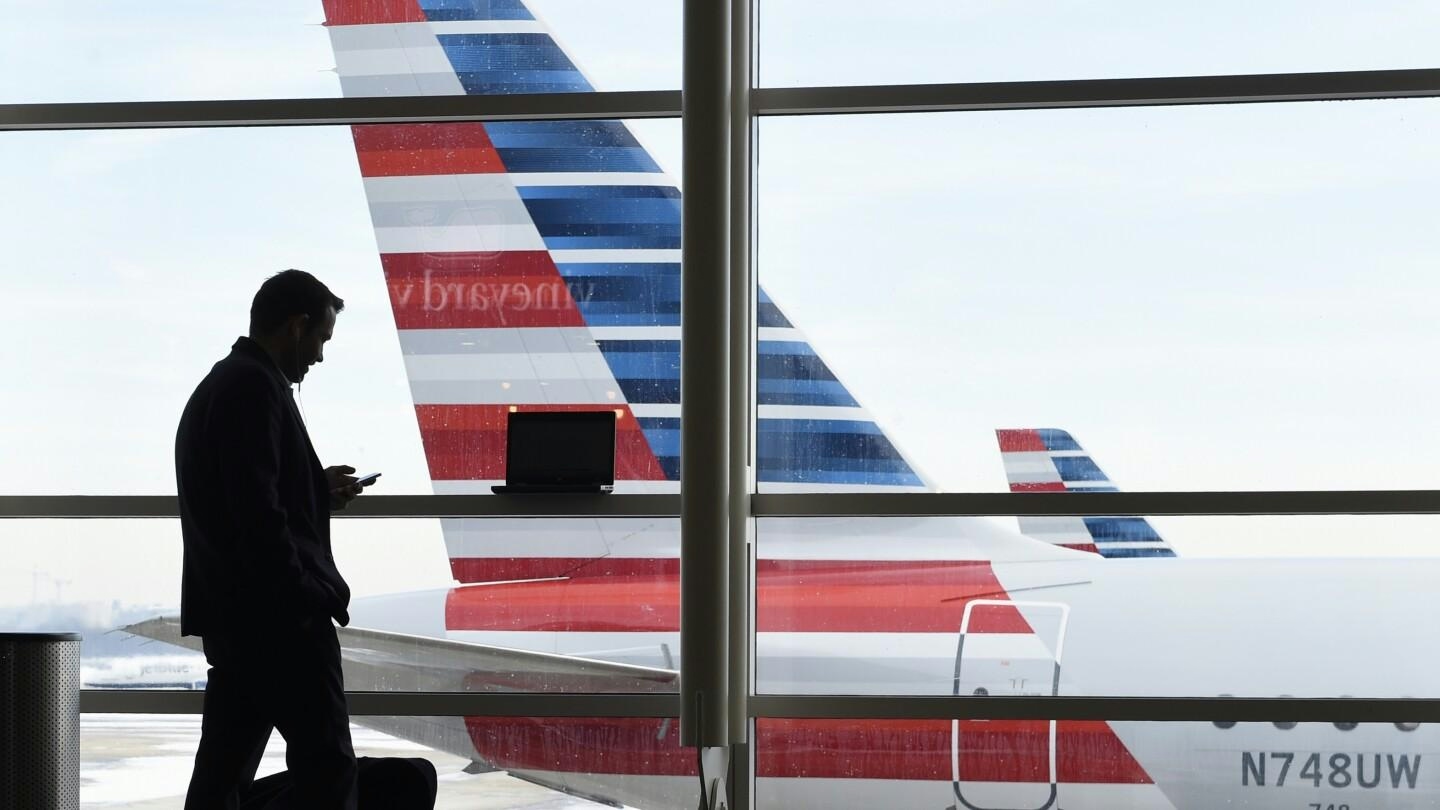
American Airlines Uses AI to Digitally Transform Travel
American Airlines Advances Digital Transformation Through Artificial Intelligence
American Airlines is intensifying its adoption of artificial intelligence (AI) to enhance passenger experience and streamline operations. Central to this effort is the integration of generative AI within its redesigned mobile application and internal systems, introducing capabilities such as real-time travel updates, AI-assisted rebooking during weather disruptions, and predictive analytics to identify travelers at risk of missing connecting flights. In some cases, this technology enables the airline to hold departing flights to accommodate delayed passengers, underscoring a commitment to minimizing travel disruptions.
Responsible AI Deployment and Operational Enhancements
Ganesh Jayaram, Chief Digital and Information Officer at American Airlines, highlighted the importance of establishing a comprehensive governance framework prior to deploying AI technologies. Over the past year, the airline has focused on implementing stringent privacy controls and safeguards to ensure responsible use of AI. Following this groundwork, generative AI was incorporated into the customer-facing chatbot, allowing travelers to efficiently rebook flights and explore alternative routes during service interruptions.
On the operational front, AI-driven predictive tools are employed to assess the likelihood of missed connections at major hubs. This capability supports real-time decision-making, such as delaying flights to better accommodate affected passengers and maintain schedule integrity. These innovations address persistent challenges within the airline industry, where nearly 25% of U.S. commercial flights experienced delays of 15 minutes or more last year, according to aviation data provider OAG. While weather remains a significant factor, OAG attributes 30% of delays to airline and airport inefficiencies and another 30% to aging air traffic control infrastructure.
Strategic Investment and Industry Competition
American Airlines’ AI initiatives form part of a broader digital reengineering strategy launched last year, which included a 20% increase in its technology budget and the recruitment of specialists from diverse industries to modernize workflows. The airline’s digital transformation focuses on enhancing operational resilience, achieving engineering excellence, and modernizing its technology stack to improve productivity.
However, the airline’s AI ambitions unfold amid intense competition for skilled talent. Major travel companies such as Royal Caribbean, Universal Orlando, and Marriott are similarly investing heavily in AI capabilities and talent acquisition, creating a competitive market for expertise that is both scarce and in high demand. This environment may elevate costs and complicate integration efforts, even as it drives rapid innovation across the sector.
Market responses to American Airlines’ AI-driven transformation remain mixed. Some investors express optimism regarding the potential for growth and operational efficiencies, while others voice caution over the substantial costs and complexities associated with large-scale technology adoption. Competitors are expected to accelerate their own AI investments and talent recruitment to maintain competitiveness in the evolving digital travel landscape.
As American Airlines continues to expand its AI capabilities, the airline seeks to establish a new benchmark for digital transformation in the travel industry, balancing technological innovation with responsible governance and a strong focus on customer experience.
Ask AeroGenie